Sweden’s Accession to NATO
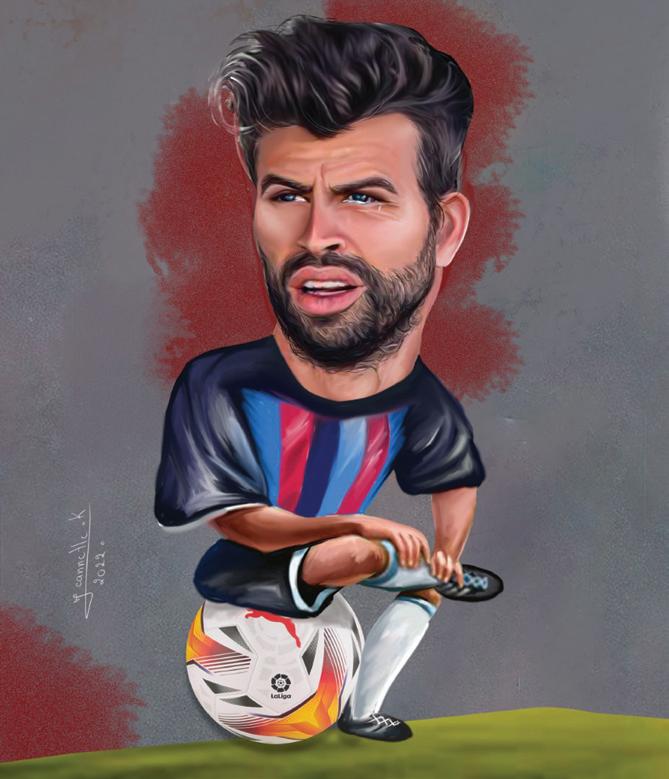
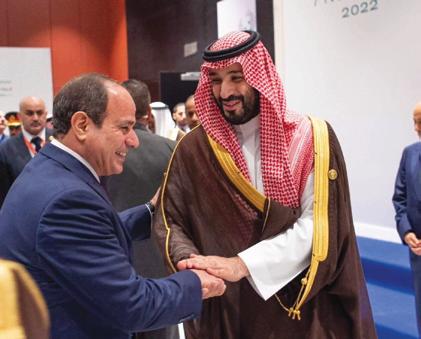

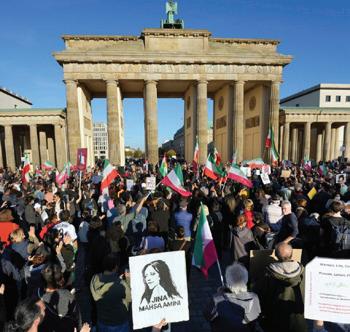

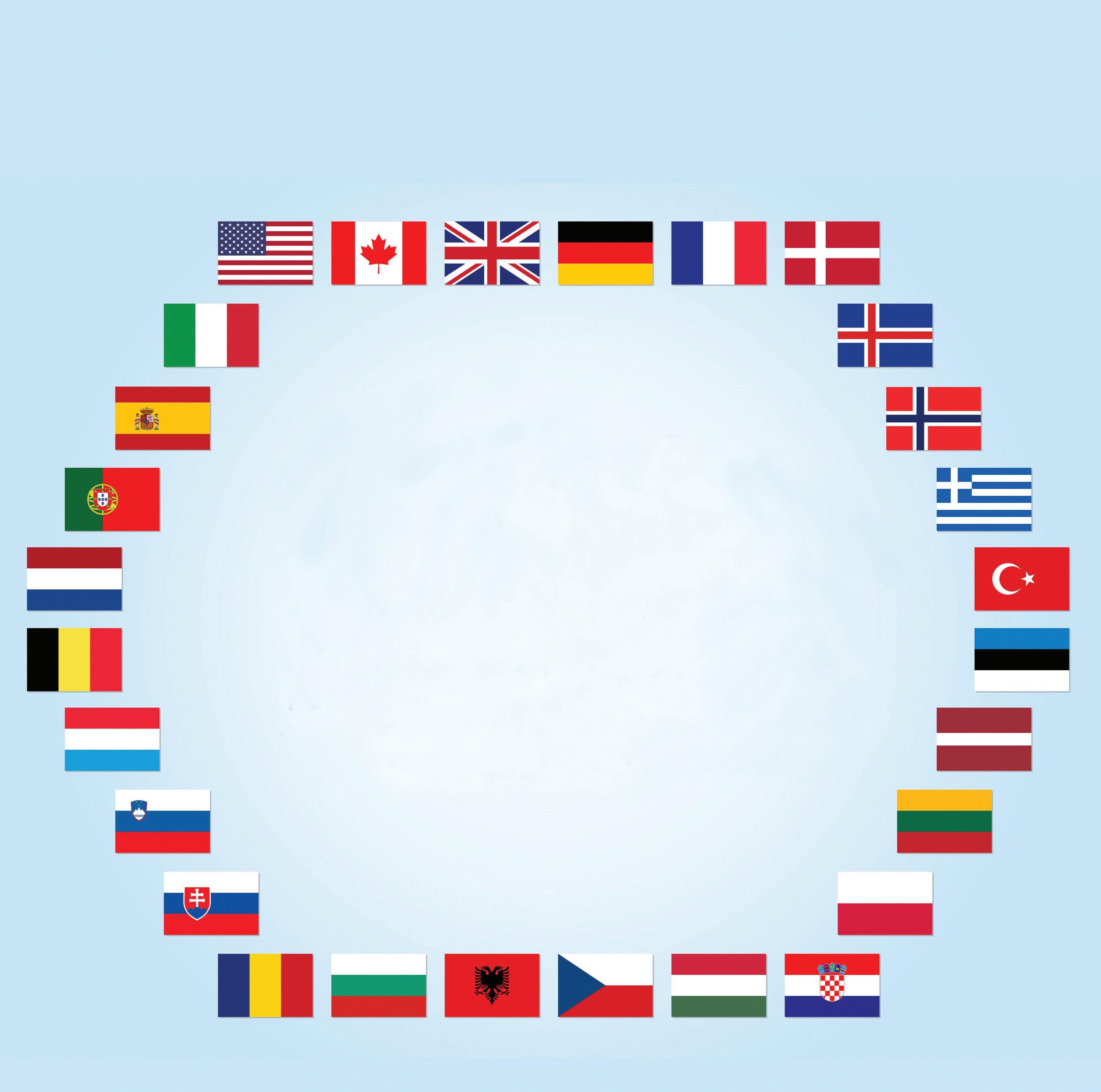
www.majalla.com Issue 1930- November- 11/11/2022 2 WeeklyPoliticalNewsMagazine www.majalla.com Issue 1930-November-11/11/2022 Piqué: Retired Football Player, But Promising Investor A Weekly Political News Magazine
German Efforts to Designate IRGC as Terrorist COP 27 Summit: The Victims of Climate Change Speak Out from Sharm El-Sheikh
is Still Blocked by Turkey
As a consequence of the Russian operations against Ukraine earlier this year, Sweden and Finland applied to join the NATO. Although 28 out of 30 NATO member states approved their membership, Hungary and Turkey are the remaining two who have yet to decide their stance on the Nordic countries accession. Suzan Quitaz writes about the Turkish insistence on a list of demands the Sweden should implement before approving its application. Turkey’s concerns, or rather demands, all revolved around three pressing issues – the Kurds, Turkish dissidents living in Sweden and arms sales.
COP27 began last Sunday in Sharm El-Sheikh, Egypt, where all world leaders, international community, activists and businesses convened to focus on the main topic threatening our planet. Mohamed El-Hadi writes about what makes this edition different from the past 26 ones in that it offers a full opportunity for participation to peoples affected by climate change and discusses the developed countries’ failure to fulfill their obligations under Paris Agreement. El-Hadi writes from Sharm ElShiekh about the main topics discussed in the summit so far, where speakers highlighted the impact of not providing the appropriate funding to affected African nations and other poor countries. El-Hadi also sheds the light on Saudi Arabia and Egypt’s efforts in this regard.
As the Iranian regime cracks down on protestors and activists, Germany and the European Union are considering listing the regime’s IRGC as a terrorist group. Jassim Mohamed writes about the conflicting priorities of Germany and other western countries whose human rights values are being tested against their economic interests.


In the arts section, Bryn Haworth writes about the recent incidents of the “Just Stop Oil” movement which targeted art works that may carry specific symbolism, sometimes pointing to the fate of earth and other times to the heedless public. In this vein, he traces the wave of art criticism that is sweeping through the galleries of Europe.
Read these articles and more on our website eng.majalla. com. As always, we welcome and value our readers’ feedback and we invite you to take the opportunity to leave your comments on our website.
A Weekly Political News Magazine www.majalla.com/eng
Editor-in-Chief
Ghassan Charbel
The Editor Mostafa El-Dessouki


HH Saudi Research and Marketing (UK) Ltd
10th Floor Building 7 Chiswick Business Park 566 Chiswick High Road London W4 5YG
Tel : +44 207 831 8181Fax: +44 207 831 2310
- ةكم قيرط - تارمتؤلما يح - ضايرلا اهل صخرم ىصصختلا عطاقت +44 207 831 8181 :ندنل - 4419933 فتاه :ضايرلا ،www.alkhaleejiah.com :ينورتكلإ عقوم hq@alkhaleejiah.com :ينورتكلإ ديرب + 9714 3 914440 :يبد ،920 000 417 : ةكلملما لخاد نم +44 207 404 6950 :ندنل +00764 537 331 :سيراب +966 11 441 1444 : لودلا فلتخم نمو ينلاعلإا ليكولا Editorial 2 11/11/22
A Weekly Political News Magazine
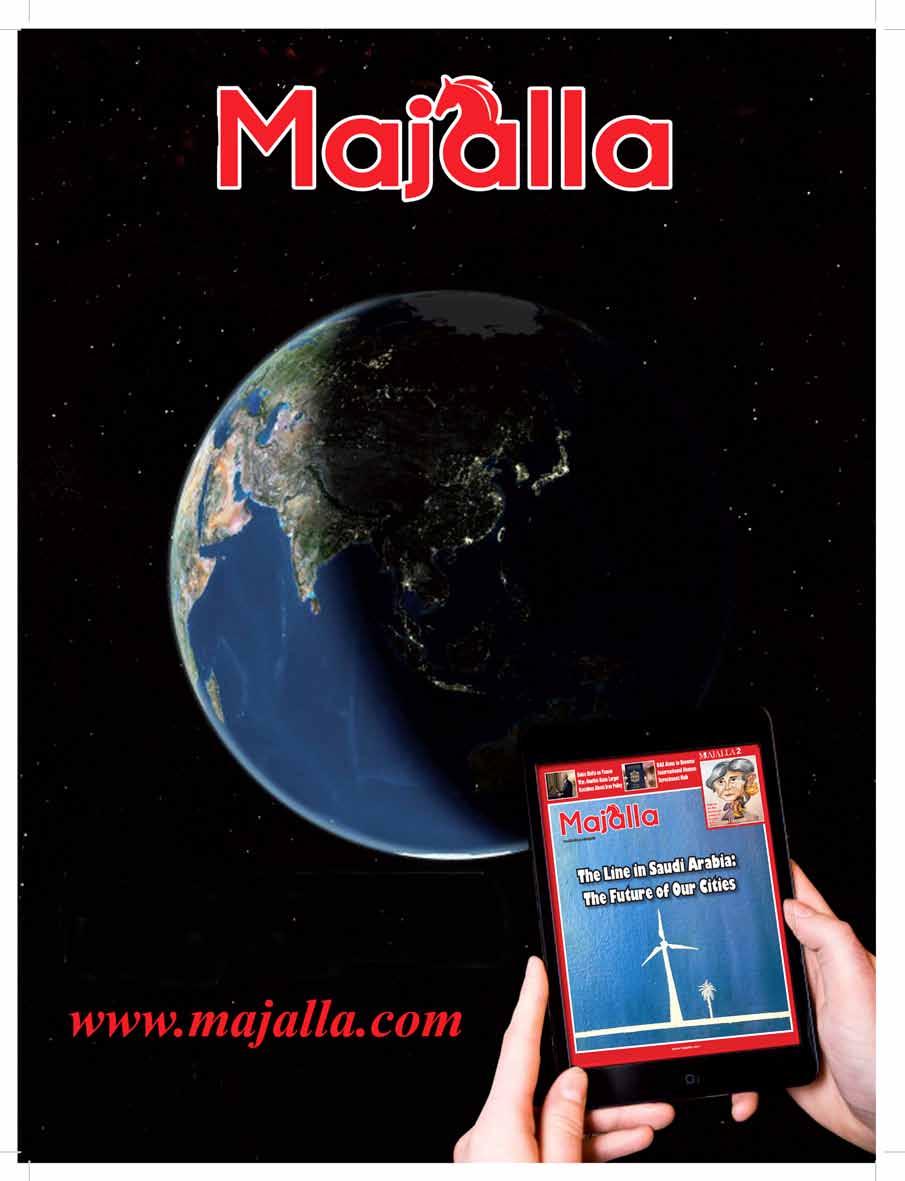

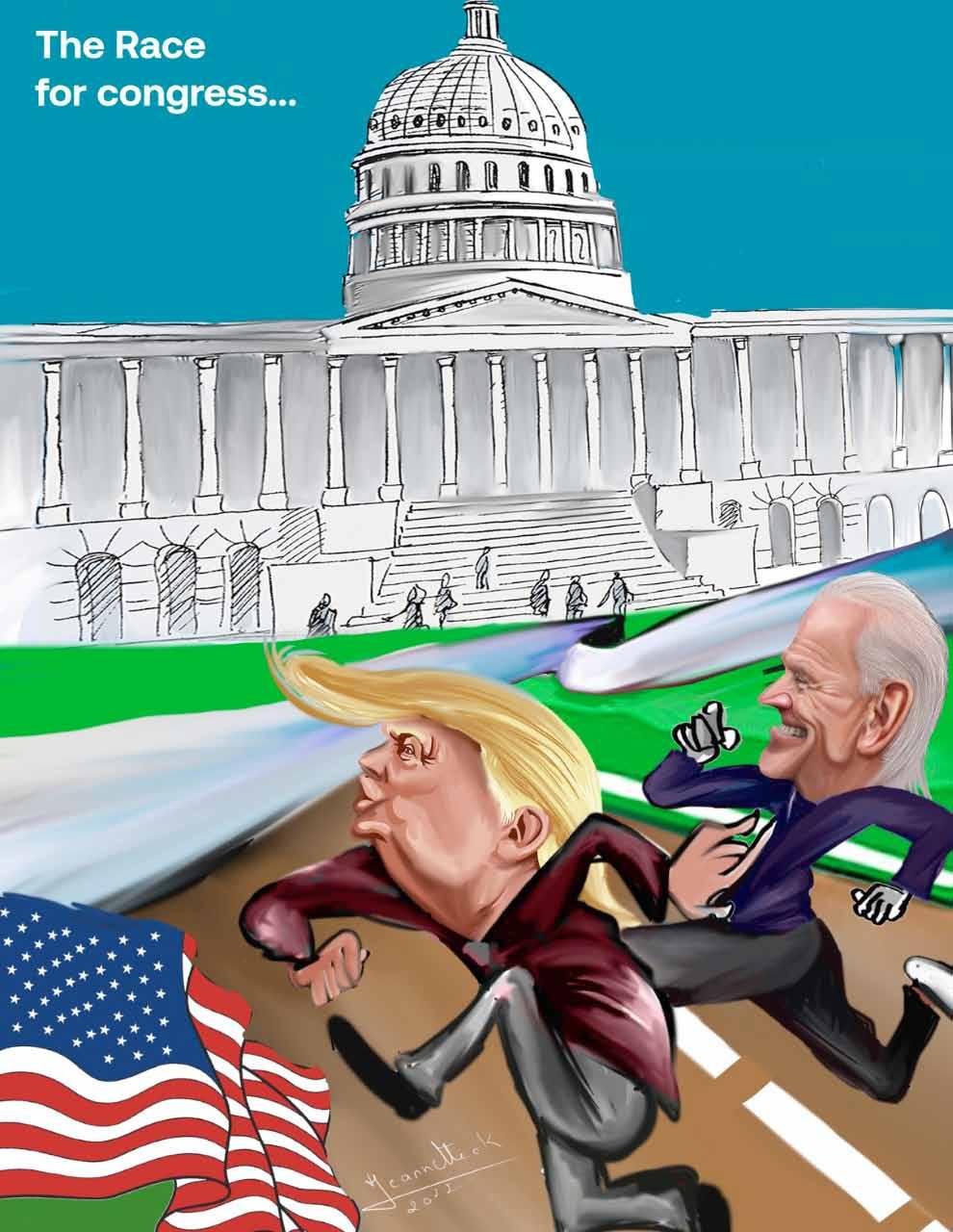

4 11/11/22
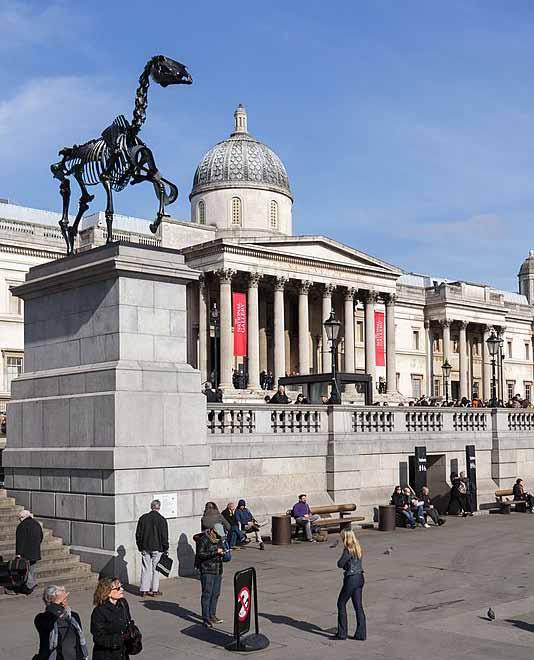


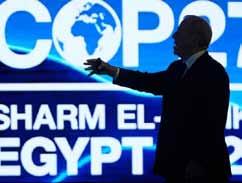



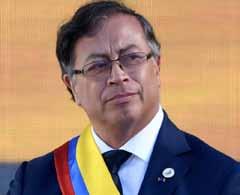

Issue 1930- November- 11/11/2022 A Weekly Political News Magazine 5 11/11/22 44 Just Stop Oils The New Way to Fight Climate Change 26 Another Exquisite Tale of Cinema from Hong Sang-soo 50 56 4 Creative Ways NASA Encourages Innovation 38 A Wealth of Black Sand Legalizing drugs in America 36 58 Programs to Sharpen Your Driving Skills
napshot
the Great Sphinx at the Giza Pyramids



A pigeon lands above the head of the Great Sphinx at the Giza pyramids necropolis on the outskirts of the twin-city of Egypt’s capital Cairo on November 2022. /AFP

6 11/11/22
S

7 11/11/22
napshot
Books festival in Baghdad
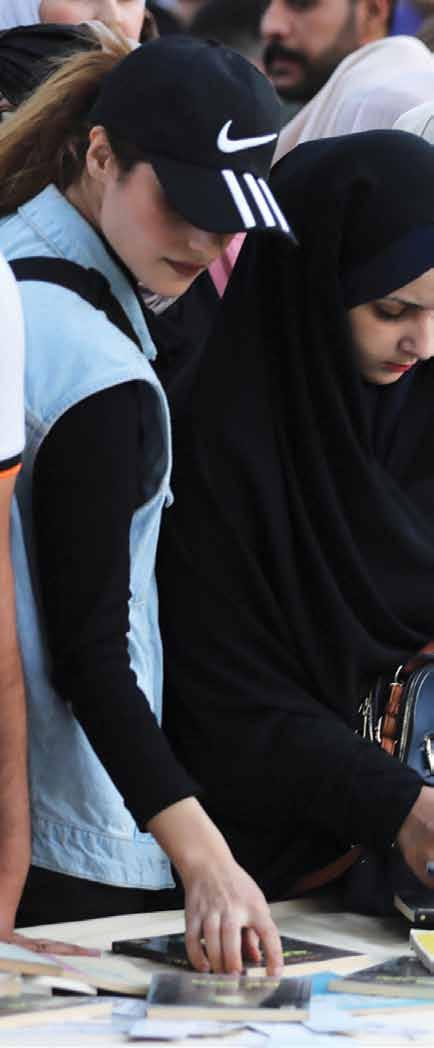

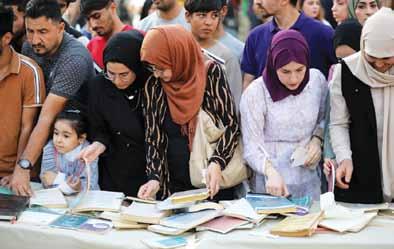
Iraqis check free books during the ‘I’m an Iraqi, I read’ festival at Abu Nuwas park in central Baghdad, Iraq, 05 November 2022. The annual event includes a free book fair, where more than 35,000 books will be distributed for free to the attendants to en courage the Iraqi people to read. EPA
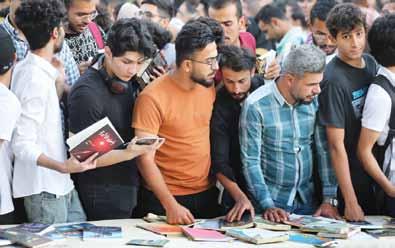
8 11/11/22
S
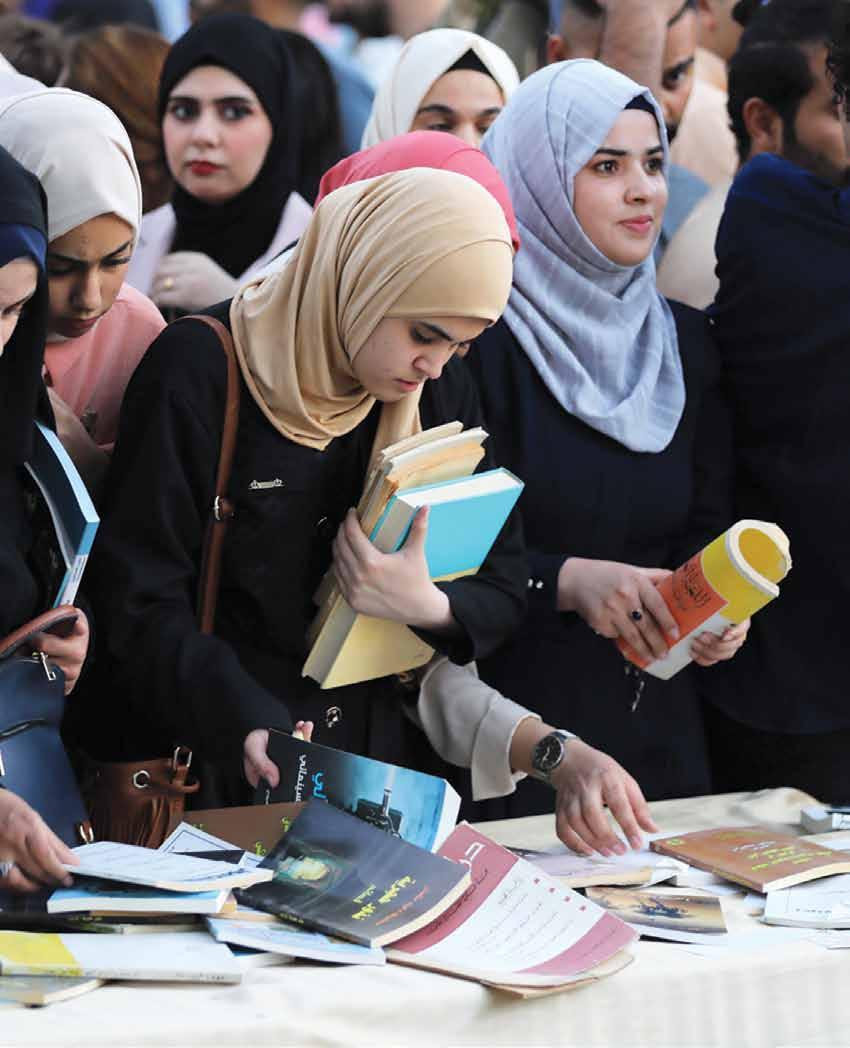
9 11/11/22
EGYPT
The presidents of the United Arab Emirates (UAE) and Egypt witnessed the signing of an agreement on Tuesday to develop one of the world's largest onshore wind projects in Egypt, according to an o cial statement on the Gulf nation's state news agency.


The Memorandum of Understanding was signed between the UAE's renewable energy rm Masdar alongside its joint venture with Egypt's main renewable energy developer In nity and Hassan Allam Utilities, the statement on news agency WAM said.
Masdar, invested in a portfolio of renewable energy assets with a combined value of more than $20 billion and a total capacity of more than 15 GW, said the new project would be its biggest yet.
LEBANON

The United States announced Wednesday that it will give $80.5 million in aid for food assistance and solar-powered water pumping stations in the crisis-battered country of Lebanon.
The announcement was made by USAID chief Samantha Power during a visit to Lebanon ahead of a trip to Egypt for the COP27 U.N. climate conference.

During the visit, Power is set to meet with Lebanese political leaders to push for a resolution to the country’s political vacuum and for leaders to carry out a slate of political and economic reforms required by the International Monetary Fund to clinch a $3 billion aid package.
SAUDI
Dazzling installations Saudi capital, push to become ordinary Saudis museum-goers. A massive library, illuminated a popular projected 130-year-old Riyadh, a Saudi curator “amazing” socio-economic work,” given grew up with
10 11/11/22
SAUDI ARABIA
installations have been lighting up the capital, bringing a taste of the kingdom’s become a global arts destination to Saudis — not just habitual museum-goers.
red orb glowing outside the national illuminated rods dotting the riverside at picnic spot, and Arabesque designs onto the mud-brick walls of a 130-year-old fort — these are all part of Noor city-wide festival.
curator Jumana Ghouth said she found it “amazing” to see Saudis from di erent socio-economic backgrounds “interact with the given that “we’re not really a nation that with art.”
UAE

Former Israeli Prime Minister Benjamin Netanyahu, who is on track to regain top o ce after last week's election, said he spoke on Thursday to the president of United Arab Emirates, Sheikh Mohammed bin Zayed al-Nahyan. "Sheikh bin Zayed invited me to visit his country so that we can together advance bilateral ties," tweeted Netanyahu, who as prime minister in 2020 forged formal relations with Abu Dhabi.

IRAQ
Late night airstrikes in eastern Syria along the border with Iraq targeted Iran-backed militiamen, in icting casualties, Syrian opposition activists said Wednesday. According to two paramilitary o cers in Iraq, some of those killed in the attack were Iranian nationals.
It was not immediately clear who was behind the strikes. The U.S. military, which along with Israel has carried out such strikes in the past, said it was not behind them and had no involvement in the al-Qaim attack. The Israeli army refused to comment on the incident.
The airstrikes, shortly before midnight Tuesday, hit tanker trucks carrying fuel and other trucks carrying weapons for the militias in Syria’s eastern province of Deir el-Zour.
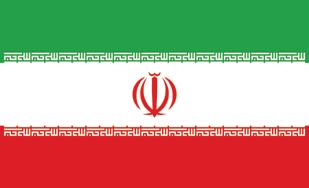
IRAN
Protests in Iran raged on streets into Thursday with demonstrators remembering a bloody crackdown in the country’s southeast, even as the nation’s intelligence minister and army chief renewed threats against local dissent and the broader world.
Meanwhile, a top o cial in Iran’s paramilitary Revolutionary Guard claimed it had “managed to achieve” having so-called hypersonic missiles, without providing any evidence.
11 11/11/22
A WEEK ACROSS
MEXICO.
U.S.

Republicans edged closer on Thursday to securing a majority in the U.S. House of Representatives while control of the Senate hinged on a few tight races, two days after Democrats staved o an anticipated "red wave" of Republican gains in midterm elections.
Republicans have captured at least 210 House seats, Edison Research projected, eight short of the 218 needed to wrest the House away from Democrats and e ectively halt President Joe Biden's legislative agenda.
Mexico's in ation slowed to 8.41% in the 12 months through October, data from the national statistics agency showed on Wednesday, coming in slightly below forecasts on the eve of the central bank's next monetary policy meeting.

Despite decelerating from the 8.7% annual rate seen last month, Mexico's in ation remains well above target and markets forecast a fresh 75 basis-point interest rate hike to 10% this week. Earlier this year, 12-month in ation in Latin America's second-largest economy had reached levels not seen since late 2000, blowing past the Bank of Mexico's target of 3% plus or minus 1 percentage point and leading to an aggressive monetary tightening.
U.K.
More than three quarters of British people who have su ered persistent ill health following a COVID-19 infection have had to cut back or change the work they do, according to a survey on the impact of long COVID published on Wednesday. The survey of 1,002 people, conducted by market research company Censuswide in October for recruitment website Indeed, adds to signs that long COVID continues to be a factor behind widespread labour shortages in Britain.
,
12 11/11/22
ACROSS THE WORLD
UKRAINE
Ukrainian troops advanced in the south on Thursday after Moscow ordered one of the war's biggest retreats, though Kyiv remained publicly wary, warning that eeing Russians could turn Kherson into a "city of death".
Ukraine's army chief Valeriy Zaluzhnyi said Kyiv could not yet con rm whether Russia was indeed pulling out, but that Ukrainian troops had advanced 7 km (4 miles) in the past 24 hours and recaptured 12 settlements.
"We continue to conduct the o ensive operation in line with our plan," he wrote in a post on Telegram.
CHINA. INDIA.
India's JSW Steel Ltd expects its exports to fall to a more than ve-year low at 10% of overall sales in the scal year to March 2023 because of reduced global demand and an export tax, a company executive said on Thursday.
Chinese authorities should take a more targeted approach to tackle COVID outbreaks and rectify any extra "layers" of measures, the state-run Xinhua news agency reported on Thursday, as cities reeled under tighter curbs as cases spread.
China is grappling with its highest tallies of coronavirus cases since April, raising questions about its zero-COVID policy that has frustrated the public and in icted damage on the world's second-largest economy. New domestic cases rose to 8,824 on Wednesday, according to health authority data.
China has repeatedly said it would stick to the zero-COVID policy despite the growing outbreaks but pressure is growing on the central government to rein in over-zealous authorities in the provinces fearing blame for failing to contain the virus.
persistent according for to
13 11/11/22
over story
By Suzan Quitaz
On Tuesday, 8 November, the Swedish Prime Min ister Ulf Kristersson travelled all the way to Turkey to meet with Turkish officials and President Tayyip Erdogan in bid to convince Turkey to allow Sweden to join NATO. The Turkish response was Sweden still has “many steps to take” to win their approval.
Sweden and Finland applied to join NATO earlier this year as a consequence of Russia’s invasion of Ukraine. Their application has already been ap proved by 28 of NATO’s 30 countries. The two member states who are still have not approved it are Hungary and Turkey. According to Finnish For eign Minister Pekka Haavisto, things are looking optimistic in regards to Hungary and it expected ap

14 11/11/22
Sweden’s Accession to NATO is Still Blocked by Turkey C Turkey to Sweden – “Do as requested so we can hasten your NATO membership”
proval of the two NATO applicants before end of this year.
The Swedish government decided to apply for NATO membership on 16 May 2022. Sub sequently, on 5 July 2022, all NATO mem ber states signed the Accession Protocol for Sweden. With the war continuing in Ukraine, it was a given that the accession would be a speedy one.
To be part of the NATO family, the two Nor dic countries would need unanimous approval from all existing NATO member states. How ever, one voice was still missing, namely, Tur key, which is a NATO member since 1952. The Turkish government was dragging its feet and there were no doubts that behind closed doors the U.S. and European officials became increasingly frustrated with what they saw as Turkish intransigence over an issue that should have been settled months ago. Turkey claimed the delay was due to Sweden and, to a lesser degree, Finland, for ignoring its security con cerns.
The ongoing Russian occupation of Ukraine, the raging war and its effect on Europe’s secu rity as whole, did not seem to be a concern of the Turkish officials , whom still enjoys a close relationship with President Putin. The Turkish demands, all revolved around three pressing is sues – the Kurds, Turkish dissidents living in Sweden and arms sales.
Turkish officials have a list of demands that Sweden must implement. One of the demands is the lifting of an arms sales embargo imposed on Turkey in 2019, following its military incur sion into the Kurdish region of Syria against the “People’s Protection Units” known as YPG, an armed Syrian Kurdish group.
Sweden announced in September that it would lift the embargo, but the Turkish Foreign Min ister Meylut Cavusoglu emphasized that Tur key wants irreversible guarantees. He said, “It’s important that once these countries accede, no steps back are taken,” he said.
Sweden’s decision to remove restrictions on the defense industry was indeed praised by the Turkish parliament Speaker Mustafa Sentop, who held talks with the Swedish PM Kristers son on Tuesday, 8 November. However, Sentop said groups and individuals that Turkey consid
ers to be terrorists were still able to conduct “propaganda, financing and recruitment activi ties” in Sweden and that “no progress has been made regarding our extradition requests.” In a similar tone to Sentop, Cavusoglu said: “Both countries have taken a number of steps, but it is difficult to say that they have fulfilled their commitments at this stage.”
The other “commitments” Cavusoglu is talk ing about are the thornier disputes centered on Sweden’s embrace of the Kurds. Turkish com plains that the Kurdish diaspora in Sweden is replete with links to the Kurdistan Workers’ Party (PKK).

Another “commitment” is cracking down on individuals Turkey considers to be a threat to its security. The individuals in question are exiled Turkish nationals, many of whom hold Swedish citizenship. These people include Kurdish separatists, Turkish journalists, human rights activists and advocates. Basically, indi viduals who have critical views on Erdogan’s government are the people Ankara wants to be extradited.
In October 2022, President Erdogan said: “As long as the terrorist organizations are demon strating on the streets of Sweden, and as long as the terrorists are inside the Swedish parlia ment, there is not going to be a positive ap proach from Turkey towards Sweden.”
That comment was a seeming reference to Swedish member of the parliament Amineh Kakabaveh, a Kurd from Iran who was a mem ber of a Kurdish militia as a teenager during 1980s when the Mullah regime engaged in a brutal crackdown on Kurds resulting in more than 10,000 Kurds in Iran being murdered. Kakabaveh fled to Sweden and eventually was
15 11/11/22
Turkish President Tayyip Erdogan and Swedish Prime Minister Ulf Kristersson meet at the Presidential Palace in Ankara, Turkey, November 2022 ,8.
Murat Cetinmuhurdar/ PPO/Handout via REUTERS
Sweden and Finland’s application has already been approved by 28 of NATO’s 30 countries. The two member states who are still have not approved it are Hungary and Turkey.
over story
elected to the Swedish parliament. One of the claims laid against these individu als, especially ethnic Turks, is that they were involved in the failed 2016 coup in Turkey. The Turkish government at the time blamed Fethullah Gulen, a Turkish cleric and business man who has lived in exile in the U.S since 1999, for plotting the coup with his followers, who include army personnel, police, judiciary and other state institutions. The failed coup resulted in tens of thousands of arrests and at least 125,000 civil servants, military personnel, judges, journalists and teachers being sacked from their jobs for an alleged connection to the
coup and Gulen.
Three years later, to be more precise, 21 August 2019, the Turkish Interior Minister Syleyman Soylu said that the United Stated was behind it, he claimed that the United States had managed the coup while Gulen’s people carried it out, adding: “It is blatantly clear the United States is behind July 15. It was Fethullah who carried it out upon their orders (…) and Europe was enthusiastic about it,” he said.
The U.S. State Department released a statement denying any U.S. involvement and repeatedly rejected Turkish demands for Gulen’s extradi tion, citing a lack of credible evidence from Turkey. Now the Turkish government seems to say that exiled Turks living in Sweden were involved in the failed coup.
Sweden’s Handling of the NATO Accession is Worrying and Acquiescent
The American government’s steadfast refusal to the extradition of Gulen and to bow to Turk ish pressure is phenomenal compared to cur rent Swedish government’s overtures to satisfy the Turkish requests
On 5 November, Sweden agreed to make more concessions. Sweden’s Foreign Minister Tobias Billstrom announced that the Swedish govern
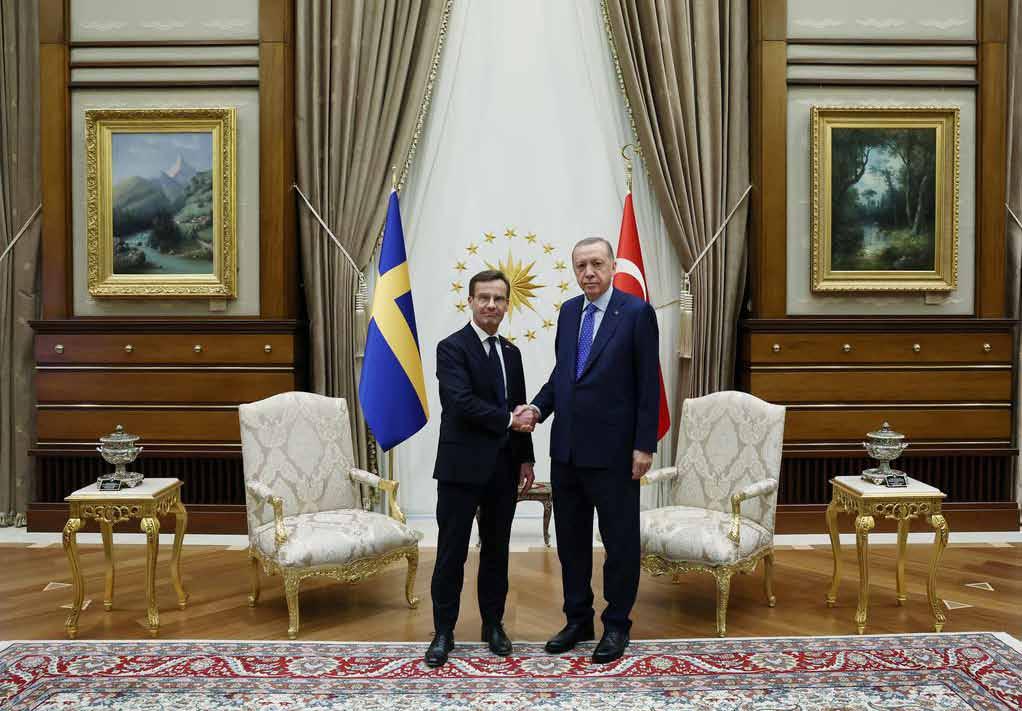
16 11/11/22
Turkish President Tayyip Erdogan and Swed ish Prime Minister Ulf Kristersson meet at the Presidential Palace in Ankara, Turkey, No vember 8, 2022. Murat Cetinmuhurdar/PPO/ Handout via REUTERS
Erdogan’s concerns, or rather demands, all revolved around three pressing issues – the Kurds, Turkish dissidents living in Sweden and arms sales.
C
US President Joe Biden (C) welcomes Finnish President Sauli Niinisto (L) and Swedish Prime Minister Magdalena Andersson to the White House in Washington, DC, on May 19, 2022.
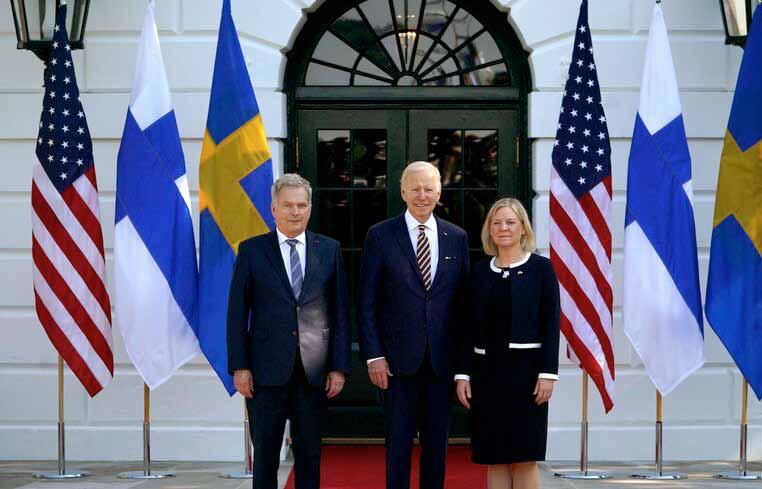
The US on May 18 gave its full support for Sweden and Finland’s bids to join NATO, promising to stand by them if threatened by Russia and pressing Turkey to not block their membership.
- MANDEL NGAN/AFP via Getty Images
ment will distance itself from YPG as it tries to win Turkish approval. Billstrom said, “There is too close a connection between these organi sations and the PKK (...) for it to be good for the relationship between us and Turkey (…), the primary objective is Sweden’s membership in NATO.”
Not long ago, Sweden, alongside the US and several NATO allies, supported the Syrian Kurdish YPG in the fight against Islamic State. The YPG is an armed militia that spearheaded the campaign against ISIS in Syria, after the Jihadi-terror group seized swaths of territory in Syria and Iraq in 2014, and led terror attacks throughout Europe. YPG received weapons and training from the US-led anti-Isis coalition, of which Swedish troops were part.
It is a small wonder that Morgan Johansson, a former Justice Minister, criticized Prime Min ister Kristersson’s government’s handling of NATO accession process as “worrying and ac quiescent.” Johansson sent an email to Chan nel 4 News expressing his skepticism of the government’s handling of the NATO process. He wrote: “The government’s handling of the NATO process is both worrying and excruciat ing. First, this week’s announcement about al
lowing nuclear weapons on Swedish soil, and now the distancing from the Kurds in Syria. Moreover, these controversial steps are taken without any contact with the opposition. Noth ing has been anchored in the Riksdag [Swedish Parliament]. The government is acting com pletely arbitrarily in a way that violates Swed ish foreign policy tradition. The YPG/PYD has played an important role in the fight against the terrorist sect IS, and has had strong support from the West, including the United States. The Kurds in Syria deserve a lot of credit for that. That the Swedish government now wants to distance itself from them is a betrayal.”
The news that Swedish government has decid ed to distance itself from Kurdish groups like YPG and Democratic Union party (PYD), pro voked some very strong reactions among or dinary Swedes, politicians and Swedish media who printed strongly worded headlines: Afton bladet, “Kristersson does not understand what Damage he is Causing.”
On 3 November, Ulrika Hyller, the head of the Swedish Journalists Union said “Turkey can’t be allowed to hold NATO membership hostage any longer.” She also called on the Kristersson government to take all the necessary measures
17 11/11/22
over story C
to protect Turkish and Kurdish journalists liv ing in Sweden.
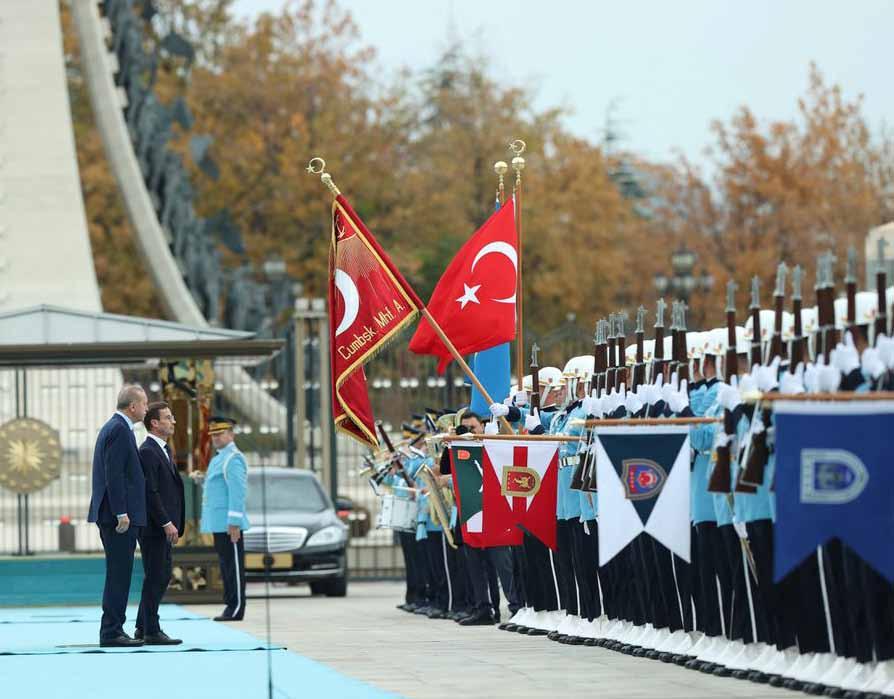
Now, it is important to point out that Sweden is home to around 100,000 Kurds and hence there is widespread sympathy for the Kurdish cause in Sweden.
Majalla spoke to Kurdo Baksi, a KurdishSwedish journalist, author and social debater who has lived in Sweden for decades. Mr Baksi called Billstrom’s remarks disrespect ful and shares with us his disappointment of the Swedish government’s decision to dis tance itself from YPG. He adds: “Given that at least 11,000 young Kurds sacrificed their lives for everyone’s safety, Billstrom’s state ment feels unpleasant and borders on disre spect.”
Addressing the issue that YPG and PYD are just extensions of PKK according to the Turk ish government, Baksi says it’s absurd and il logical, “PYD and YPG are independent units. They fight for human rights for Kurds, Arabs, Turkmans, Armenians and Christians living in Rojava, North East Syria. PKK is fighting es pecially in Turkey. I know 37 Kurdish parties in Iran, Iraq, Syria and Turkey. All the Kurdish parties have links to each other. It is normal.” Baksi continued saying that “The new Swedish government is afraid of Putin and wants to be
18 11/11/22
a
The news that Swedish government has decided to distance itself from Kurdish groups like YPG and Democratic Union party (PYD), provoked some very strong reactions among ordinary Swedes, politicians and Swedish media.
Turkish President Tayyip Erdogan and Swed ish Prime Minister Ulf Kristersson review a guard of honour during a welcome ceremony at the Presidential Palace in Ankara, Turkey, No vember 8, 2022. Murat Cetinmuhurdar/PPO/ Handout via REUTERS
April 19, 2018. REUTERS/ Yves Herman
member of NATO as soon as possible because historically the Swedes have a Russia-phobia. The last Swedish war was with Russia was in 1809. The current government believes that cutting ties with YPG and PYD will placate Erdogan and they will be a member of NATO in one second.”
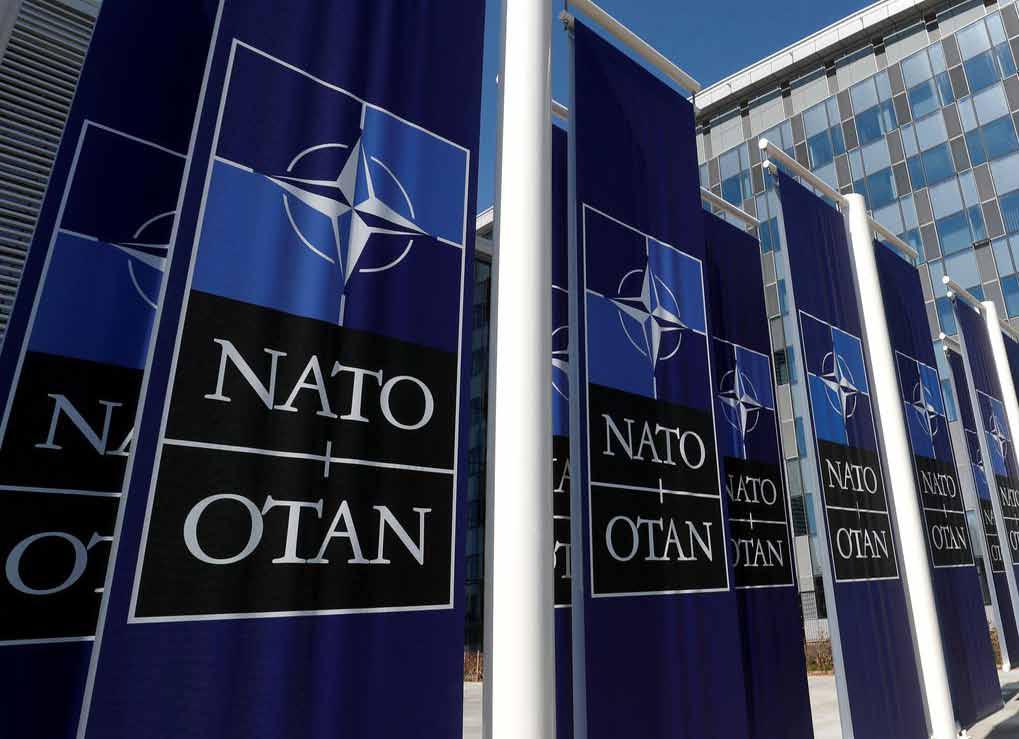
Baksi explains to Majalla, that the current government is more nationalistic than previ ous governments as it gets its “main support from the racist Sweden Democrats, which is the second largest party in the Swedish parlia ment (…). The new government just looks af ter its own nationalistic interests and has aban doned Human Rights Values, just so it can gain NATO membership, it is terrible. But thank God, we have an independent judicial system in Sweden, and it’s not up to the Swedish gov ernment to deport journalists and opposition figures”.
Before ending the interview with Kurdo Baksi, Majalla asked, “Is the Swedish society support ive of Kurds?” Baksi replies with a lot of op
timism: “Kurds have many friends all over the world, even in Sweden. The Kurdish proverb ‘No friends but the mountains’ is no longer ap plicable.”
The Swedish government might think that holding diplomatic press conferences in Stock holm and Ankara may further its goal of be coming a NATO member. But in reality, it will not happen until Turkey sees it security con cerns addressed. Magnus Falkehed, the jour nalist from Expressen newspaper, writes will “Sweden join NATO in a couple of weeks or by next summer, or never?” President Erdogan will defer making any decision until the Turk ish general elections which will be held in June 2023. Erdogan needs to appear to his support ers as the tough-on-Kurds leader and try to win as many as possible of the Turkish nationalist voters who are deeply opposed to Kurdish in dependence.
Majalla, did contact Prime Minister Ulf Kris tersson’s office for a comment but none was received.
19 11/11/22
Banners displaying the NATO logo are placed at the entrance of new NATO headquarters during the move to the new building, in Brussels, Belgium
COP

20 11/11/22 Politics
27 Summit:
Change
Out from Sharm El-Sheikh Putting pressure on developed countries to meet their financing commitments
The Victims of Climate
Speak
By Mohamed El-Hadi - Sharm El-Sheikh

The Sharm El-Sheikh Climate Summit “COP27” is distinguished from previous editions by pro viding countries affected by climate change with a full opportunity to make their voices heard, as well as eliciting more pledges from the devel oped world, which pollutes the environment, to fulfil its financial obligations to poor and mid dle-income countries, particularly those on the African continent.
The “poverty and climate change” syndrome dominated many of the summit discussions which will continue until November 18. Repre sentatives from 197 countries and more than 120 leaders, officials, and presidents are all agreeing that the livelihoods of millions of the poor and vulnerable are threatened by natural and climate change losses. Norway pledged to provide three times more adaptation funding to Africa.
Since its inception, COP27 has attempted to work on providing financial packages to poor countries to deal with the consequences of glob al warming. This comes about in light of the de veloped countries’ failure to fulfil their pledges in the Paris Agreement, regarding the provision of $100 billion annually to developing countries to deal with the consequences of climate change from the occurrence of floods, droughts, or sea level rise.
Participants in the conference’s discussion ses sions emphasized that if this funding is not pro vided, 130 million people will fall into poverty by 2030 and 200 million people will migrate by 2050, making climate change adaptation activi ties an “imposition” that cannot be postponed or delayed.
On the other hand, Dr. Akinwumi A. Adesina, President of the African Development Bank, emphasized that climate change is costing the African continent huge losses ranging between $7 and $15 billion per year, which are expected to rise to $50 billion by 2050 despite accounting for only 3% of greenhouse gas emissions.
Adesina also stated that climate change has dis
placed 5 million Africans, which is exacerbated by predictions that temperatures will rise fast er there than in any other region of the world. Despite this, Africa receives only 3% of total global climate finance, amounting to no more than $18 billion per year, which is insufficient to address its nearly $125 billion annual problems.
In addition, the majority of African representa tives, including heads of state and government, criticized and emphasized that assisting the con tinent in adapting to climate change is based on justice, equity, and shared responsibility, par ticularly after the African Development Bank doubled its climate financing to $25 billion by 2025.
Climate expert Dr. Mahmoud Mohieldin stated at the COP27 conference that if funding for re newable energy projects in Africa is not pro vided, the proportion of harmful emissions will increase in the future. Three of the four people on the planet who are without electricity are liv ing in Africa. In addition, he stated that 600 mil lion Africans face energy shortages out of 800 million worldwide. Aid is the third line of de fense after the first line of defense, which is rep resented by reducing emissions and relying on renewable energy sources, and the second line of defense, which is represented by adaptation by pumping investments in basic infrastructure.
On the other hand, French President Emmanuel Macron vowed to put pressure on “rich nonEuropean countries” to pay their “fair share” in assisting poor countries in dealing with climate
21 11/11/22
“The Sharm El-Sheikh Climate Summit “COP27” is distinguished from previous editions by providing countries affected by climate change with a full opportunity to make their voices heard.”
change, specifically targeting the United States and China in terms of reducing greenhouse gas emissions and maintaining financial solidarity.
According to Samuel Warberg, the regional spokesman for the US State Department, US President Joe Biden has also pledged to quadru ple the Climate Fund’s funding from the Barack Obama administration’s ceiling and provide $11 billion in funding annually by 2024 to support countries’ efforts to decarbonize their econo mies, promote climate-friendly land use prac tices, and enhance adaptation and resilience.
In their speeches, Egyptian President Abdel Fat tah El-Sisi and his government ministers also emphasized the need for the climate summit in Egypt to raise the slogan of moving from pledg es to implementation, which means the need for feasibility studies and projects, as well as for the major countries to fulfil their commitments.
POINT OF LIGHT
In light of efforts to obtain developed-world support for developing countries to combat cli mate change, Saudi Arabia was a bright spot, as Crown Prince Mohammed bin Salman an nounced the Kingdom’s contribution of $ 2.5 billion to support projects of the Green Middle East Initiative over the next ten years.
In this regard, Prince Mohammed bin Salman stated at the opening of the second edition of the “Green Middle East Initiative” summit in Sharm El Sheikh, which was held in conjunction with the climate change conference, that the initia tive seeks to “support efforts and cooperation in the region to reduce and eliminate emissions by more than 670 million tons of carbon dioxide equivalent,” in addition to planting 50 billion trees, increasing by 12 times the area covered by trees, and by recladding.
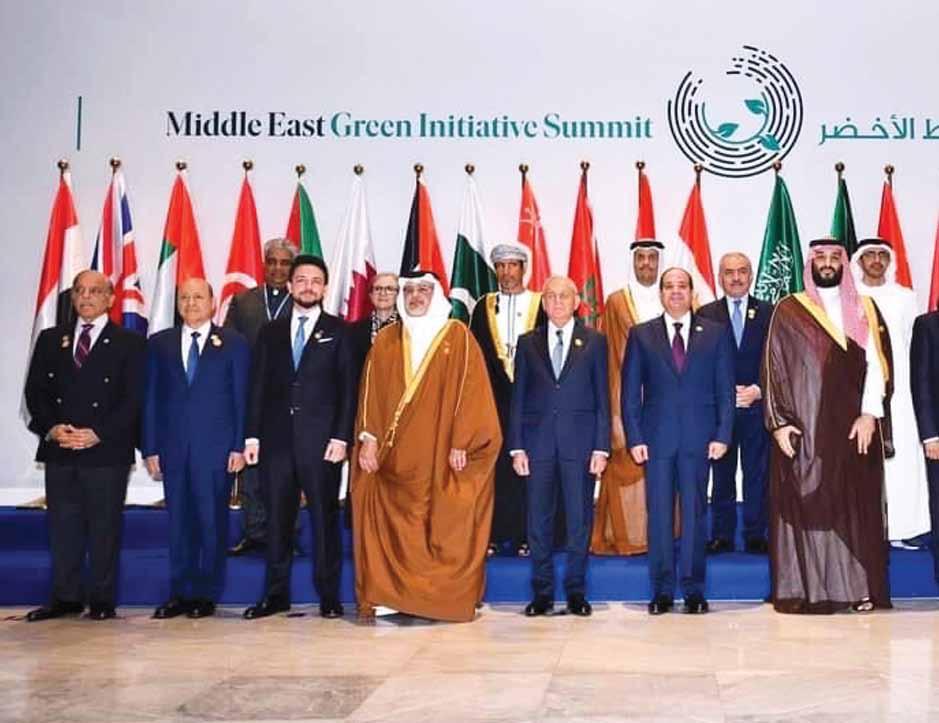
22 11/11/22
The 2022 “Middle East Green Initiative” Summit, held on the sidelines of the COP27 UN Climate Conference, currently in session in Sharm El Sheikh. . Photo Credit: EFE/EPA/Presidency of Egypt
Prince Mohammed bin Salman also empha sized the importance of implementing the cir cular carbon economy approach, as well as launching several other initiatives, such as an international cooperation platform to imple ment this approach, a regional investment fund dedicated to financing solutions for carbon cir cular economy technologies, and the initiative for clean fuel solutions to provide food, as well as accelerating the pace of technology develop ment and adoption.
The Crown Prince also mentioned diversifying the energy mix used to generate electricity so that by 2030, 50% of it will be produced using renewable energy sources, removing 44 million tons of carbon emissions, or 15% of the King dom’s current nationally determined contribu tions by 2035. He also mentioned several King dom initiatives, such as the establishment of a regional climate change center and a regional cloud seeding program, as well as the goal of
planting 10 billion trees and increasing terres trial and marine protected areas to 30% of total national area.
INITIATIVES RELATING TO FOR ESTS AND DROUGHT
The Green Middle East Initiative prompted ap proximately 25 countries to form a group to hold each other accountable for protecting and halt ing deforestation by 2030, following pledges made by approximately 140 countries at COP26 in Britain last year.
In terms of financing, pledges to protect forests outperformed global warming and the green house effect. Approximately 22% of the $12 billion pledged by countries in Glasgow to pre serve forests by 2025 has already been paid, and Germany has doubled its forest funding by two billion euros until 2025.
Furthermore, an international alliance for drought resilience, comprised of more than 25 countries and 20 agencies, has been launched with the goal of improving preemptive respons es, with an initial funding of five million euros provided by Spain to launch the project and mo bilize additional support, particularly a Kenyan project to plant five billion trees in five years, rising to ten billion in a decade.
In the same vein, Sherif Elrefaey, a climate pol icy researcher at Peking University, saw the dis cussion of climate challenges in Africa as being a natural topic in view of Egypt’s hosting of the summit, as a representative of the continent that requires massive funding to confront the phe
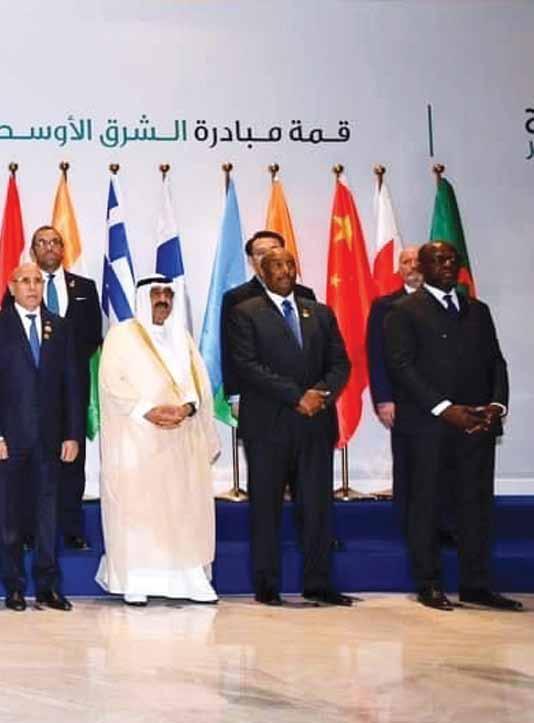
23 11/11/22
“Prince Mohammed bin Salman also emphasized the importance of implementing the circular carbon economy approach, as well as launching several other initiatives.”
nomenon of climate change.
Elrefaey stated that holding the summit in the current volatile global environment prompted it to address issues that were different from pre vious climate summits, particularly in light of the ramifications of the Russian-Ukrainian war, which had global ramifications and caused a ma jor energy crisis in Europe. This is in addition to the emergence of serious climate problems, the most significant of which is the drying up of rivers (in whole or in part) across Europe. Inter
national institutions have issued a final warning about the Earth’s future.
On the other hand, President Sisi’s call in his opening speech to end the Russian-Ukrainian war received a strong echo and was a focus of the speakers, who referred to the war’s destruc tion of 5 million acres of forest, while Russian President’s Special Envoy for Climate Affairs Ruslan Dolgalev focused on the impact of cli mate change on water supply in the world.
EGYPTIAN CONTRIBUTIONS
Aside from Egypt’s tourism gains and free pub licity for Sharm El Sheikh, Egypt was success ful in attracting investments during the confer ence. On the sidelines, an Emirati company and the Egyptian government signed an agreement to develop a 10GW onshore wind energy pro ject in Egypt. It would be the world’s largest wind energy project, preventing the emission of 23.8 million tons of CO2, equivalent to approxi mately 9% of Egypt’s total emissions.
The energy produced by the new plant saves $5 billion in annual natural gas costs, in addition to providing approximately 100,000 job oppor
Representatives attend the Middle East Green Initiative (MGI) Summit held on the sidelines of the ongoing 27th session of the Conference of the Parties (COP27) to the United Nations Framework Convention on Climate Change in Sharm El-Sheikh, Egypt, Nov. 2022 ,7. (Xinhua/ Ahmed Gomaa)
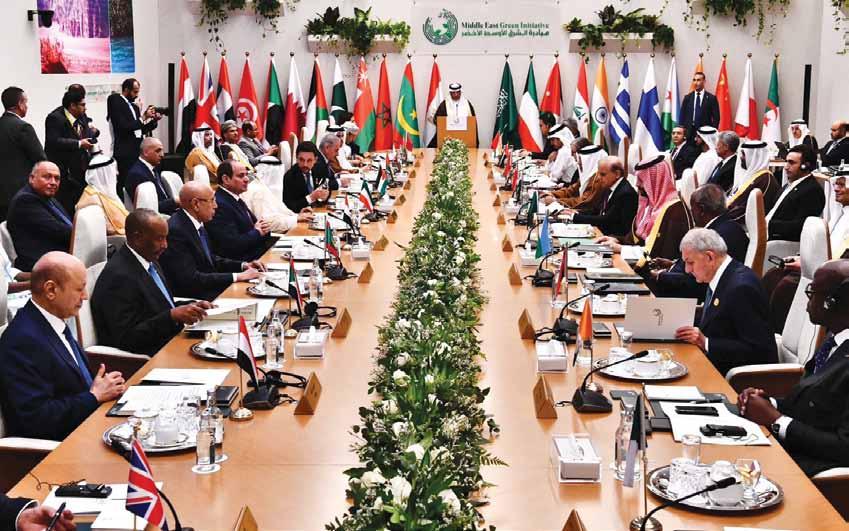
24 11/11/22
in the conference’s discussion sessions emphasized that if this funding is not provided, 130 million people will fall into poverty
2030 and 200 million people will migrate
2050.”
“Participants
by
by
Image provided by the Egyptian presidency showing Egyptian President Abdel Fattah al-Sisi, the President of the United Arab Emirates, Sheikh Mohamed bin Zayed Al Nahyan, and the UN Secretary General, Antonio Guterres on the opening day of COP27, in Sharm El-Sheikh, Egypt. EFE/EPA/Presidency of Egypt.
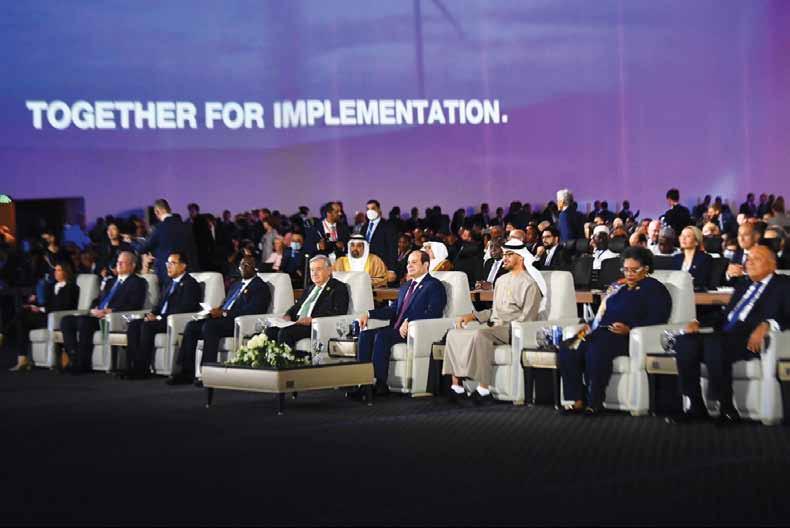
tunities, including 30,000 direct construction jobs, 70,000 indirect workers, and 3,200 per manent jobs in operation and maintenance work after the plant’s initial activation is completed.
JOINT INVESTMENTS
The Egyptian government also signed a mem orandum of understanding with the Egyptian Orascom Construction, and the Kahrabel FZE, (a subsidiary of the French Engie SA), and the Toyota Tsusho Corporation to build a 3 giga ton power plant. In addition, a memorandum of understanding was made with the Scatec-ASA company.
Egyptian President Abdel Fattah El-Sisi launched the first phase of a project to establish a green hydrogen production plant with a capac ity of 100 megawatts in Ain Sukhna as part of an integrated energy system for the year 2035, which is expected to cost $40 billion and will treat green hydrogen as the environmentally friendly fuel of the future.
With the launch of the new project, the number of green hydrogen production projects in Egypt which are expected to be implemented within the Suez Canal Economic Zone has increased to
15. International renewable energy companies will participate in all of these projects.
According to Dr. Ahmed Sultan, Petrophys ics Department Manager at Tharwa Petroleum Company and Head of the Cairo Engineers Syndicate’s Energy Committee, Egypt has had a renewable energy strategy since 2015, aiming to increase the percentage of renewable energy and diversify its sources, with green hydrogen at the heart of 15 projects, which forms about 35% of such projects in the Arab world.
He also added that Egypt has the necessary ca pabilities to produce green hydrogen and a de sire to make leaps in the field of energy, which represents the prudent strategy for the new re public, and is also an international trend, as the world produces 120 to 150 million tons of green hydrogen annually, with the goal of increasing to 200 million tons by 2050.
Furthermore, Sultan stated that Egypt has the experience to produce green hydrogen, as Egypt owned a factory to produce it years ago as a fuel for marine transport. However, the factory was closed due to high costs and a lack of com petitiveness, although these factors have now changed.
25 11/11/22
The New Way to Fight Climate Change
Cooperation is essential to curtailing emissions coming from the global economy
By Arunabha Ghosh, Artur Runge-Metzger, David G. Victor, Ji Zou
Over the last three decades, diplomats from around the world have convened 26 times at the annual Conference of the Parties to plot out their fight against climate change. On Sunday, they began the latest such gathering, COP27, in Egypt. It is well timed, coming in the middle of an active hurricane season and after a summer when
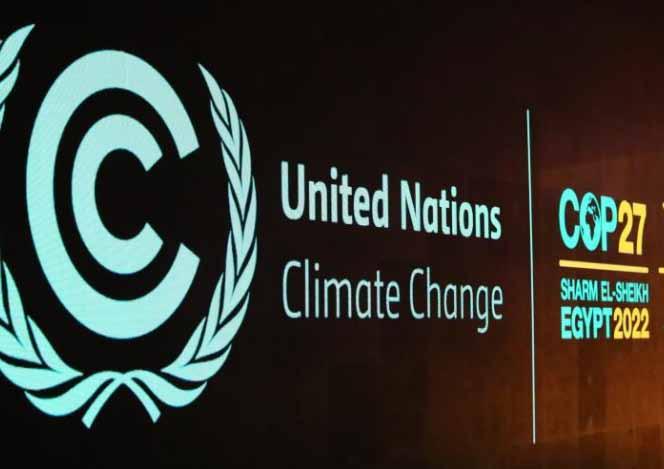
heat waves broke records across the world, a drought in Africa put 22 million people at risk of starvation, and floods submerged onethird of Pakistan.
At the conference, people mostly pay attention to what is sure to be a grinding process of global diplomacy, where decisions are made by consensus across 197 nations. Governments fight over how much richer countries should pay to help poorer ones, including how to compensate developing states for losses and damages caused by
26 11/11/22
Politics
increasingly severe climate-related disasters. They argue about which countries are behind on their pledges and which are doing the most to fight the climate crisis. There are endless discussions of process, which often eclipse the actual substance of controlling emissions and managing climate impacts. It won’t help that poli cymakers are distracted by an unusually long list of other global concerns: the ongoing pandemic, growing geopolitical tensions between the United States and China, a looming global recession, high energy prices, and, of course, a land war in Europe. Cooperation will certainly be essential to curtailing emissions coming from the global economy. But curtailing emissions doesn’t have to hinge on global consensus. Many activists and some governments have begun to adopt a new theory of climate collaboration that avoids seeking consensus across all the na tions—nearly always a recipe for the lowest and slowest com mon denominator. Instead, this new approach focuses, sector by sector, on the technologies, businesses, and policies that are es sential to creating a cleaner economy. It requires cooperation, at least initially, among industrial leaders, investors, workers, and governments that are most aligned for a faster transition away from carbon. When green technologies are not yet mature, or for the parts of the global economy that lack experience with imple menting deep cuts in emissions—which is true for most sectors in most of the world—the new approach relies on cooperation within small groups of highly motivated governments and firms to draw up and test solutions. As these technologies mature, their costs will come down and people will become more familiar with how effective they are. Cooperation can then expand as more economies adopt these superior, cleaner technologies. This hopeful vision is already taking root. The 2015 Paris climate agreement, designed for flexibility, allowed different countries to pursue diverse approaches to cutting emissions. And last year, at COP26, there was unprecedented engagement by business and financial firms, as well as by governments that, in varying ways, subscribe to this new theory of change. Thanks in no small part to private-sector contributions and side deals—backed by national policies and announced at COP26—the world has accelerated its investment in renewable power generation, increasingly shifted to electric vehicles, invested in carbon capture and storage sys tems to clean up conventional fossil fuels, and made other chang es to create a new, clean economy.
To be sure, there is still a role for global diplomacy in the fight against climate change, particularly when it comes to issues that smaller groups simply cannot address—such as setting overall expectations for financial and technical assistance to poorer na tions and agreeing on broad global emissions goals. On these subjects, governments will have conflicts and a global consensus will be hard to achieve. But the process is unavoidable and worth the effort.
On many topics that have dominated global climate diplomacy, however, the endless wrangling has not generated much benefit. The world should not have spent seven years debating reporting rules, and it should not now have a lengthy debate over the defini tion of “climate finance.” In fact, the last two decades of global negotiations have made it clear that trying to fight climate change
through sweeping global agreements that cover every sector and country is more likely to produce acrimony and gridlock than anything else. In Egypt, then, it is important not to be demoral ized by inevitable diplomatic fissures on top-line negotiations, such as on how to compensate countries for the damage of cli mate change—important as such negotiations (and issues) may be. Activists must put a newfound emphasis on what’s been on the sidelines, where governments and companies will be making decisions that can also reshape the planet.

GETTING TO ZERO
The chief culprit in climate change, carbon dioxide, is an intrinsic byproduct of the entire world’s energy use, and it lingers in the atmosphere and the oceans for thousands of years. The more car bon that enters the atmosphere, the more sea levels rise, and the worse storms, droughts, and other consequences of global warm ing become. Stopping climate change requires cutting emissions to near zero within the next several decades. Eliminating carbon emissions will require radically transforming most industries, from airlines to agriculture. Each sector has its own business models and its own problems, and so each will need a unique strategy to make the shift. Some sectors, such as farming, will require multiple distinctive approaches. Reducing deforestation requires reworking land-use policies in part so there are stronger incentives to protect forests and so that agricultural crops and ranching don’t invade forested areas. Cutting emis sions from fertilizer production, however, necessitates a big push for precision agriculture (so that less fertilizer is needed), along with testing and production methods that can capture emissions from fertilizer factories before they escape to the atmosphere. For years, global negotiators ignored the reality of these secto ral and contextual nuances. Instead, they focused on aggregate goals and targets—such as global emission cuts—which in effect imposed a one-size-fits-all approach that was bound to fail. That started to change with the Paris agreement, which allowed more experimentation. Rather than trying to set emission targets and timetables that would apply to each country, the Paris architects allowed each nation to set its own goals and plans—and then adjust them with evolving experience and shifting political pref
27 11/11/22
“To confront climate change, the international community must again rethink how diplomacy and institutions can foster cooperation. First and foremost, it must recognize that stopping carbon emissions requires sectoral progress.”
A man walks past a board showing the 27th Conference of the Parties of the United Nations Framework Convention on Climate Change (COP27) in Sharm ElSheikh, Egypt, Nov. ,5 2022. Photo: Xinhua
erences. But the Paris agreement was still largely a product of the old system: a multilateral endorsement of unilateral action. It was, by itself, not a framework for practical international cooperation. Finally, at COP26, held in Glasgow last year, the new approach was on full display. There were groups of governments and in dustrial firms in multiple sectors—including aviation, electricity, finance, forestry, road transport, steel, and shipping—that un veiled major plans to slash emissions. In each industrial sector, leading countries and firms recognized the importance of work ing together, but in manageable numbers. In steel and cement, small groups of governments and companies agreed to establish standards for zero-emission products and to use both public pro curement and private purchasing to send clear signals to produc ers to invest in cleaner production methods. It worked; companies are already delivering the first tons of clean steel to the auto in dustry in Sweden. More will follow. In shipping, a group of 20
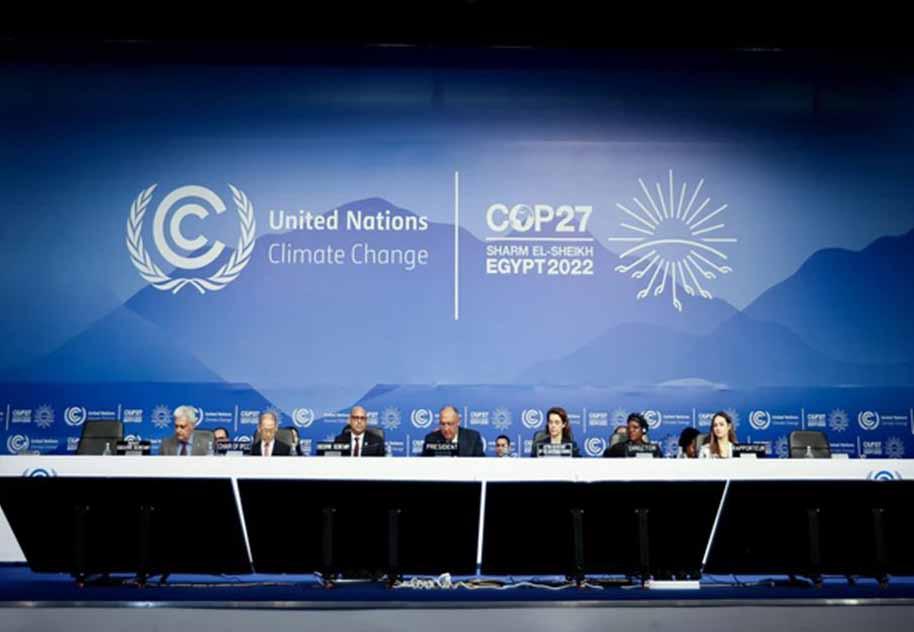
countries are cooperating with leading businesses to create the world’s first green shipping corridors, where pairs of ports co ordinate standards and investments so that new, green ships can cleanly sail between them. In agriculture, a collection of states that produce and consume large amounts of products that prompt deforestation agreed to work together on transparency and trace ability systems, to support small farmers, to promote innovation, and to improve their systems of trade—factors that will better protect forests while furthering local development. Notably, none of these private or public programs were devel oped through the global consensus process. Instead, they emerged independently. Some of these initiatives were born at interna tional gatherings, but most were created in smaller “plurilateral” groups, and outside the limelight. That hasn’t stopped them from becoming major forces in the fight against greenhouse gases. The International Solar Alliance, for example, was announced on the sidelines of Paris in 2015, with just a few participating countries. Now it has 110 signatories.
LEAPS OF FAITH
Central to this new theory of change is the idea that industrial transformation is often risky and steeped in the unknown. The level of risk—and thus the policy strategy—depends on the stage of technological development, which can vary by sector and ap plication.
Generally, new technologies are expensive to create and test, re quiring highly motivated inventors and entrepreneurs. The best ideas are unknowable at inception, and so spending on them is usually a gamble. To develop green technologies, then, policy
28 11/11/22
Representative imageImage Credit: ANI
“Besides energy production, the sector most in need of climate reform is agriculture, which accounts for roughly 25 percent of global emissions.”
Politics
makers must not only find ways to identify promising new ideas and actors but also create portfolios to diversify the investment risk. Handling these challenges requires a nimble industrial policy that varies by sector and need. Governments and firms must collaborate—often across borders. For example, the United States and the European Union have created a partnership to ad vance clean steel and other metals, making it clear to their leading firms that successful innovation in metals will be rewarded in multiple markets. The potential returns, along with direct gov ernment support for promising technologies, lower the risks of experimentation.
When these technologies mature, the best role for government shifts from incubating inventions steeped in uncertainty and learning how to use novel technologies in different contexts to helping companies scale the options that work best. This shift in strategy is evident, for example, in how solar power has emerged from a fringe technology to one of the least expensive ways to generate electricity. Early on, governments in California and Ja pan poured money into diverse technological options for solar power. Soon, other states, including Germany, were investing, as well. They learned which technologies worked and which did not. Starting in the 2000s, the best options became clear and the production frontier shifted to China, where the government scaled up manufacturing, driving costs even lower.
One lesson from this experience is the need to constantly evalu ate experiments and to test technologies in different contexts to see whether they really work. Another is that an international approach to developing and testing technology is often the most effective because it expands the scope for experimentation, learn
ing, and application of new ideas. By following this logic, India and many other countries are now also leaping forward and de ploying solar power on a massive scale.
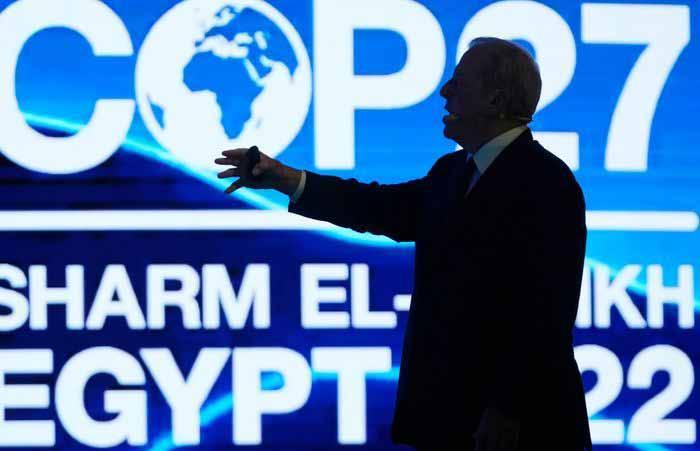
Electric vehicles are on the cusp of similar supercharged growth—something that leading firms and governments, in col laboration, can again foster. Nine percent of all new passenger cars sold in 2021 were electric or plug-in hybrid. These vehicles’ market share has more than tripled since 2019 and continues to grow rapidly. Governments have helped foster the growth of the industry by spending hundreds of billions of dollars on manu facturing incentives and policies that encourage investment in extensive networks of charging stations, and regulating to require ever lower emissions per kilometer. Electric vehicles and charg ing systems will become even more popular if governments can harmonize their regulations to require that nearly all vehicles achieve zero emissions—an effort that would require coordina tion among only a small number of states. The world’s vehicle market is highly concentrated: the G-7 countries, Brazil, China, and India cover over three-quarters of all sales. And in Glasgow, an alliance of regulators from the largest and most advanced car markets laid the foundation for going to zero by creating the Zero Emission Vehicle Transition Council.
In many other domains, a similar story is unfolding. The produc tion of clean hydrogen, for example, has attracted much attention because hydrogen could at least partly replace conventional natu ral gas. Hydrogen also has chemical properties that could allow it to cut emissions from industries—such as steel and plastics—that have so far proved difficult to control. Industrial policies in India, Japan, the United States, Europe, and several other places are
29 11/11/22
Former U.S. Vice President Al Gore speaks during a session at the COP27 U.N. Climate Summit Wednesday in Sharm el-Sheikh, Egypt. AP
backing experiments to mass produce, ship, and market carbonfree hydrogen. What the world needs next is an active effort—led by these pioneer governments and the firms they back—to assess which of these approaches are most promising and to coordinate the rules and standards for the production, storage, transport, and use of clean hydrogen. But to work, this regulatory process needs to be done within small groups of these most motivated actors, not forums that demand global consensus, such as COP. But perhaps the most important target for aggressive regulation is coal. The black stuff is still essential to the global power grid, but it is responsible for roughly a fifth of all global carbon di oxide emissions, and so it must be jettisoned (at least in its pre sent incarnation). Over the last two years, multiple governments, international organizations, nongovernmental organizations, and private-sector advocates have been working together to help countries build new clean power plants and move away from coal. Last year around the edges of COP26, France, Germany, the United Kingdom, the United States, and the European Union agreed to provide South Africa a multibillion dollar package of loans and grants so that it could quickly move coal out of its ener gy system. The use of coal is in decline elsewhere in the world, as well. The war in Ukraine has prompted some countries, such as Germany, to temporarily shift back, but the future of coal is clear. Eliminating coal, of course, could economically ravage some lo cal communities. It is a prime example of why, when activists rightly speak of a “just transition” to a future clean energy sys tem, they are calling for a transition that takes care of the people (and places) harmed by pollution control. That’s why the best programs—the effort to cut coal in South Africa, for example, or the new green energy loans and grants from the European Bank for Reconstruction and Development—include not just funding for coal alternatives but also programs to help the communities
hit hard by the shift.
SEEDS OF CHANGE
Besides energy production, the sector most in need of climate reform is agriculture, which accounts for roughly 25 percent of global emissions. It pollutes in a wide variety of ways, from fertilizer production and forest clearing to large emissions of methane—a strong greenhouse gas—from rice cultivation and livestock.

But much like electric power, agriculture is ready for transforma tion. For decades, inventors have developed inexpensive ways of dramatically cutting farming emissions. For example, advanced techniques to grow rice and produce meat can reduce methane emissions by half or more. (If people ate less meat, especially beef, it would also help.) With new techniques, agriculture could even suck carbon dioxide from the atmosphere. Plants eat up the gas through photosynthesis, and scientists have been able to en gineer crops that put some of the gas into their roots. If farmers use these crops and avoid immediately tilling the land, the carbon would accumulate in the soil rather than in the atmosphere, which could lessen global warming. Such changes will not be easy to make. One-quarter of the world’s working population is farmers, and so the sector is full of vested interests and ingrained methods that are difficult to break. States also haven’t given the industry incentives to widely test and apply the new techniques. But there’s a solution, and it’s the same one that applies to the climate fight at large: carving the sector into smaller units to make it politically and administra tively tractable. States and firms, for example, could have teams that focus specifically on fertilizers; other teams could work on advanced crops, including those that sequester carbon in their roots; and so on.
This process will be especially critical to stopping deforestation. Nearly all forest clearing stems from institutions that allow bad land management practices, including poorly designed rules gov erning property rights, as well as regulations that undermine hu man rights. (Many forest dwellers in the tropics are indigenous communities, and too many states make it easy for agricultural businesses to evict them from their homes.) But vested interests make it impossible for the world to create effective global agree ments about forests. It would be much better to take a plurilateral approach focused on the small number of countries—including those that account for the vast majority of deforestation. If the deforestation coalition includes enough economic heft, it could create penalties, such as trade barriers, for countries that do not do enough to protect their trees. Indeed, a modestly sized coali tion of countries has already pledged $12 billion to help protect forests. What’s critical now is that these governments spend that money wisely across a diverse array of possible solutions and
30 11/11/22
Politics
“This process will show where technology, business, and agricultural practices are headed; why that trajectory is believable; and what governments can do to support sectors as they transition.”
A wind turbine overlooks the coal-fired power station in Gelsenkirchen, Germany, on Dec. ,1 2014. - AP Photo/ Martin Meissner.
frequently evaluate what’s working.
GREENING THE GLOBAL ORDER
In the aftermath of World War II, political leaders worked together to transform the way major powers interacted. To prevent another Great Depression, for example, they created new financial institutions, such as the International Monetary Fund and the General Agreement on Tariffs and Trade—the precursor to the World Trade Organization.
To confront climate change, the international community must again rethink how diplomacy and institutions can foster cooperation. First and foremost, it must recognize that stopping carbon emissions requires sectoral progress. For all the talk about the need for global solutions and policies that reach across the world economy, progress on deep decarbonization is best made through individual industries. Govern ments must provide these industries with the resources and incentives to experiment and test green strategies and technologies. If they work together internationally, they can create much stronger incentives for investment, including by establishing global markets that yield much larger economies of scale.
Businesses, too, should think about working within smaller groups to fight emissions. The aviation industry, for example, is doing much to ad vance greener fuels, aircraft designs, and engines. But the International Civil Aviation Organization, the intergovernmental body responsible for air travel, is too big for its members to reach a workable consensus, and so it is not pushing the technological frontier. Instead, the sector would be better off if its members worked through more manageable coalitions that are focused on specific problems, such as one dedicated to making sure that sustainable aviation fuel is scalable and actually sustainable, or one that enables the first commercial use of electric propulsion and hydrogen airplanes. Similarly, one reason the many different global ini
tiatives on forest protections have yet to yield real progress is that they tend to be big and sprawling, inviting a lot of talk rather than action. If environmental activists want to invent a workable way to save the world’s trees, they should downsize these initiatives.
But the composition of small groups can be critical. Deep cuts in emis sions, for example, won’t spread around the planet unless the world’s four great geopolitical poles—the United States, China, the European Union, and India—all find a way to engage. Each of these power cent ers has something to contribute. They must do more to cooperate, including by identifying technologies for a low-carbon economy in which their scientists can work together.
This new theory of change—with its focus on starting small—may suggest that COP27 is less critical than widely thought. After all, the gathered states are unlikely to arrive at a top-line agreement that will seriously advance the fight. Instead, their overall package will probably be riven with disagreements and feature plenty of hollow calls, as has been the case in the past. As a result, activists could write off the whole process as a failure.

Yet even if the overarching agreement falls short, the conference can still be a success—or at least not impede momentum already in place. That’s because what matters most in Egypt won’t be big-ticket mul tilateral diplomacy but, instead, the practical, sideline convenings of governments and firms willing and able to force change. To make the conference a success, the industry-focused coalitions doing the most should host events focused on credibility, demonstrated action, and sys tem transformation. This process will show where technology, business, and agricultural practices are headed; why that trajectory is believable; and what governments can do to support sectors as they transition. If the world wants to decarbonize, it should pay attention.
This article was originally published by Foreign Affairs.
31 11/11/22
Politics
German Efforts to Designate IRGC as Terrorist
Iranian Protests Put Berlin, Brussels to Test
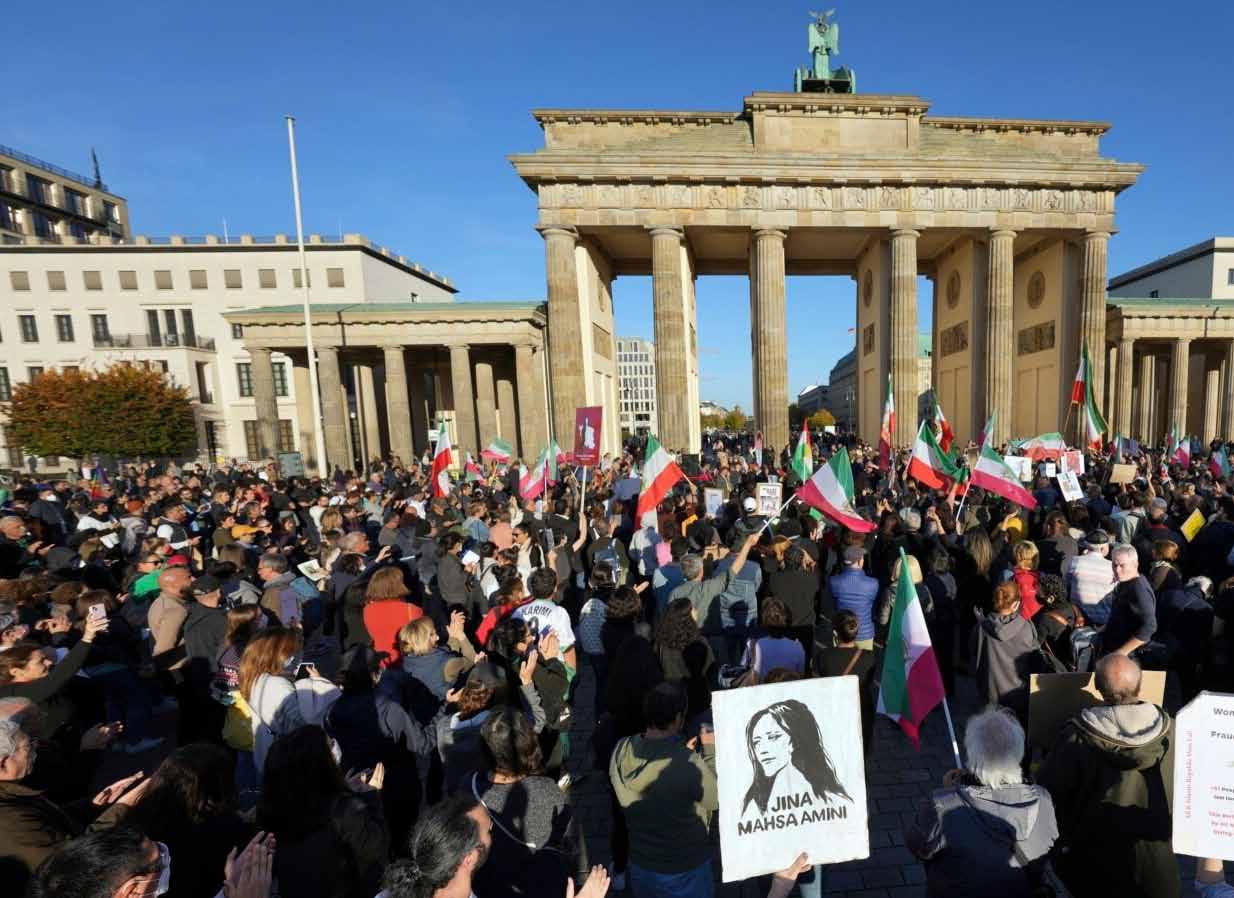 By Jassim Mohamed - Bonn
By Jassim Mohamed - Bonn
Germany is still betting on its relations with Iran de spite criticism from parliament and the government. It hopes to obtain a number of economic investments for its companies in Iran with any expected decision to lift sanctions, which is linked to discussions on the Iranian nuclear issue.
The German position on Iran’s policies of suppress ing demonstrators puts Berlin and Brussels to the test
of whether Germany really does put the issue of hu man rights ahead of its economic interests. This is still a subject of speculation.
Germany condemned the Iranian authorities’ vio lence against the protesters, stressing that it is con sidering with Brussels to include the Revolutionary Guards on the terrorist list, which would be a move Tehran described as “irresponsible.”
Meanwhile, Iran has charged a thousand people in the protests taking place in the country.
32 11/11/22
People gather in front of the Brandenburg Gate in Berlin, Oct. 2022 ,7 to protest against the government in Iran in memory of Mahsa Amini, a young Iranian woman who died after being arrested in Tehran by Iran’s ‘morality police’.

Why did the European Union not condemn Iran’s politicians for the suppression of the demonstrators? Is the European Union contemplating a ban on the Iranian Revolutionary Guard Corps (IRGC) to deter Iran?
On October 31, 2022, German Foreign Minister An nalena Baerbock said that Germany and the European Union are considering adding the Iranian Revolution ary Guards to the list of terrorist organizations.
Germany has announced that it will impose tougher sanctions on Iran outside the EU sanctions package.
“We are also studying how we can designate the Revolutionary Guards as a terrorist organization,” Baerbock added.
Since the killing of the Kurdish girl Mahsa Amini by the morality police last September, Iran has wit nessed protests which constitute one of the boldest challenges facing the rulers of Tehran since 1979.
Iran described criticism of its handling of popular protests as “interfering” in its “internal affairs” and criticized Germany’s plans to list Iran’s Revolution ary Guards as a terrorist entity.
Foreign Ministry spokesman Nasser Kanaani said that the Revolutionary Guards is an official mili tary organization of the Islamic Republic, and that it would be considered a “completely illegal act.”
About IRGC
The Iranian Revolutionary Guard is a paramilitary militia body that was formed during the “Islamic Revolution” of 1979.
It maintains its air, land and sea branches and pro tects the Iranian regime. Its special operations unit, the Quds Force, has helped create proxy militias in Iraq, Syria, and Lebanon.
In defiance of a United Nations Security Council resolution, the Iranian Revolutionary Guard launched a second satellite early this year 2022 to monitor from space and show that Iran has the technology to achieve an intercontinental ballistic missile capabil ity.
Will the Iranian Revolutionary Guards be designated?
Brussels is studying whether the Iranian Revolution ary Guard will be placed on the ban list, amid Ger man criticism of Iran for its handling of the demon strations.
“I have made it clear that we will launch another package of sanctions, and that we will discuss how to list the Revolutionary Guards as a terrorist organiza tion,” Baerbock told ARD.
These statements came a few days after the German Foreign Minister issued a statement pledging to rear range relations with Iran.
“There can be no ‘business as usual’ in our bilateral relations with a country that treats the lives of its citi zens with such contempt,” she said in the statement.
“I have used the past few weeks to make extensive ef forts to critically review the remaining instruments in trade and finance, including commercial relations that still exist with Iranian banks. Bilateral dialogue still exists, in the field of economy and energy, the same applies to German cultural institutions and teachers working in Iran - we will reduce their presence sig nificantly.”
BERLIN SUMMONS IRANIAN AM BASSADOR
In January 2018, German police raided suspected Iranian agents who were believed to have spied on potential Israeli and Jewish terrorist targets, including Jewish kindergartens.
Germany summoned Iran’s ambassador in Berlin af ter a Pakistani man was convicted of spying for Iran on a German politician as a possible assassination target. On October 10, 2022, Belgium accused an Iranian diplomat accredited in Austria of plotting a bomb attack in France.
KEEP THE QUDS FORCE ON THE US LIST
The United States has insisted that Iran’s Revolution ary Guards’ Quds Force remain on its designated list of terrorist groups, while Washington continues ne gotiations to restore the 2015 Iran nuclear deal. The Chairman of the Joint Chiefs of Staff, General Mark Milley, told a congressional hearing that in his “per sonal opinion” the Quds Force should not be removed from the terrorism list, which is one of Tehran’s con ditions for renewing the deal.
The United States Treasury Department designated the IRGC for the first time in October 2007 in ac
33 11/11/22
The German position on Iran’s policies of suppressing demonstrators puts Berlin and Brussels to the test of whether Germany really does put the issue of human rights ahead of its economic interests.
cordance with counter-proliferation authorities under Executive Order 13382.
This action also designated the IRGC’s Quds Force branch—though not the IRGC in general—as a terrorist group by executive order No. 13,224 in June 2011.
The State Department added the Iranian Guard to the list of foreign terrorist organizations. On top of the numerous Treasury designations mentioned above, the European Union banned economic transactions with the IRGC in 2010, and the US and EU designa tions remained in place after the 2015 nuclear deal was implemented.
VOLUME OF TRADE BETWEEN GERMANY AND IRAN
The volume of trade between Germany and Iran in
the period from January to July 2022 amounted to 1,072 million euros, which represents a growth of 4% compared to the same period of the previous year (1,035.5 million euros).
In the first seven months of 2022, Germany exported 885 million euros to Iran, an increase of 3% compared to the same period last year (856 million euros).
On the other hand, Iran’s exports to Germany amounted to 187 million euros and also increased by 4% compared to the same period last year, 179 mil lion euros.
Human Rights Situation in Iran
The human rights situation in Iran is deteriorating by the day, as security forces take increasingly bru tal measures against women and men in the streets, who demand nothing more than their universal hu man rights.
The systematic oppression of women and ethnic, re ligious and sexual minorities in Iran is nothing new, but it is currently reaching unprecedented levels. The situation in Iran is becoming increasingly dan gerous for German citizens as well. The human rights sanctions that Germany has imposed together with its European partners can be considered a first step. Ger many is now in the process of adapting its bilateral relations to the current situation with further meas ures.
There is a package of sanctions that the European Un ion could impose on Iran which would make more perpetrators of human rights violations subject to
the death of
in Tehran, October ,27 2022. (This photo was taken by an individual not employed by The Associated Press and obtained by the AP outside Iran)

34 11/11/22
Germany summoned Iran’s ambassador in Berlin after a Pakistani man was convicted of spying for Iran on a German politician as a possible assassination target.
Politics
Iranians protests
Mahsa Amini
Iranian soldiers from the Revolutionary Guards march during the annual military parade marking the anniversary of the start of Iran’s 1988 1980 war with Iraq, on September ,22 2015, in Tehran ( AFP)
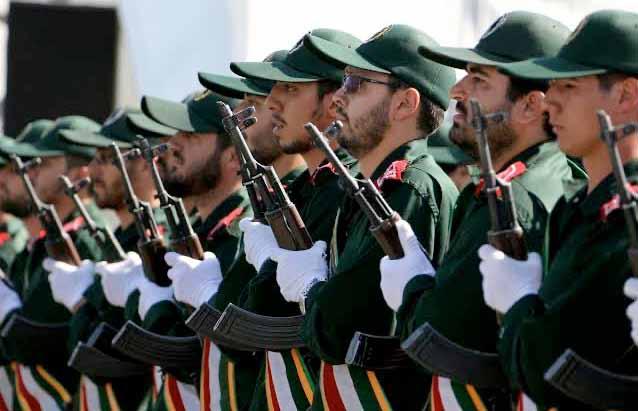
sanctions.
Meanwhile, Germany is considering including offi cials as well while sanctions are imposed in principle at the level of the European Union.
It is estimated that sanctions would include not is suing national visas in the future except to holders of official and diplomatic passports and when abso lutely necessary. Additional national travel restric tions would also be imposed on members of Iranian organizations listed by the European Union.
CONCLUSION
The statements of German Foreign Minister Baer bock to put the Iranian Revolutionary Guard on the ban list could be a threat and pressure being used by Germany against Iran. This is occurring in the wake of Iran’s arrest of several people with Iranian citizen ship, although it was not confirmed whether they had dual citizenship.
This means that Germany can discontinue its threats, perhaps to reach an agreement with Tehran to provide consular support to German citizens at the very least if they are not released.
The designation of the Iranian Revolutionary Guards could complicate the Vienna talks, as the designation of the Iranian Revolutionary Guards by the United States was one of the thorniest issues during the course of the nuclear talks. EU sanctions on the IRGC would add another obstacle to reviving
the Joint Comprehensive Plan of Action (JCPOA). Germany is more attentive to its economic interests with Iran than to both the issues of human rights and its national security.
Despite the criticism directed at the German govern ment for years, it is still betting on an agreement on the Iranian nuclear matter. Germany is still hoping to get a number of investments inside Iran with the pos sible lifting of sanctions against Iran.
The option of placing the Iranian Revolutionary Guards on the ban list remains, but according to the current data, it is unlikely that Berlin will take this step at the present time unless there is an escalation of demonstrations inside Iran and Iran continues to suppress the demonstrators. This may apply also to the stance taken by the European Union, which can be described as a timid and traditional attitude.
35 11/11/22
German Foreign Minister said that Germany and EU are considering adding the Iranian Revolutionary Guards to the list of terrorist organizations.
Legalizing drugs in America
Colombia’s President Criticizes the US while a Republican Senator Raises an Alarm
By Mohammad Ali Salih – Washington
Recent victory in Brazil by liberal Lula da Silva added an other liberal leader in Latin America, all of whom are usu ally critical of US policies there, and blame the US for the dangerous spread of drug trade and use in the Americas. Earlier this year, this criticism came from former protest leader Gabriel Boric in Chile and leftist Pedro Castillo in Peru. During the last three years, Argentina’s Alberto Fernández, Mexico’s Andrés Obrador, Panama’s Lauren tino Cortizo and Venezuela’s Nicolás Maduro spoke out on the matter, while a month ago, we heard from former
guerrilla leader Gustavo Petro in Colombia. Petro led the group, not only in criticizing the US for the spread of drug use and trade, but, also, for calling for drug decriminalization.
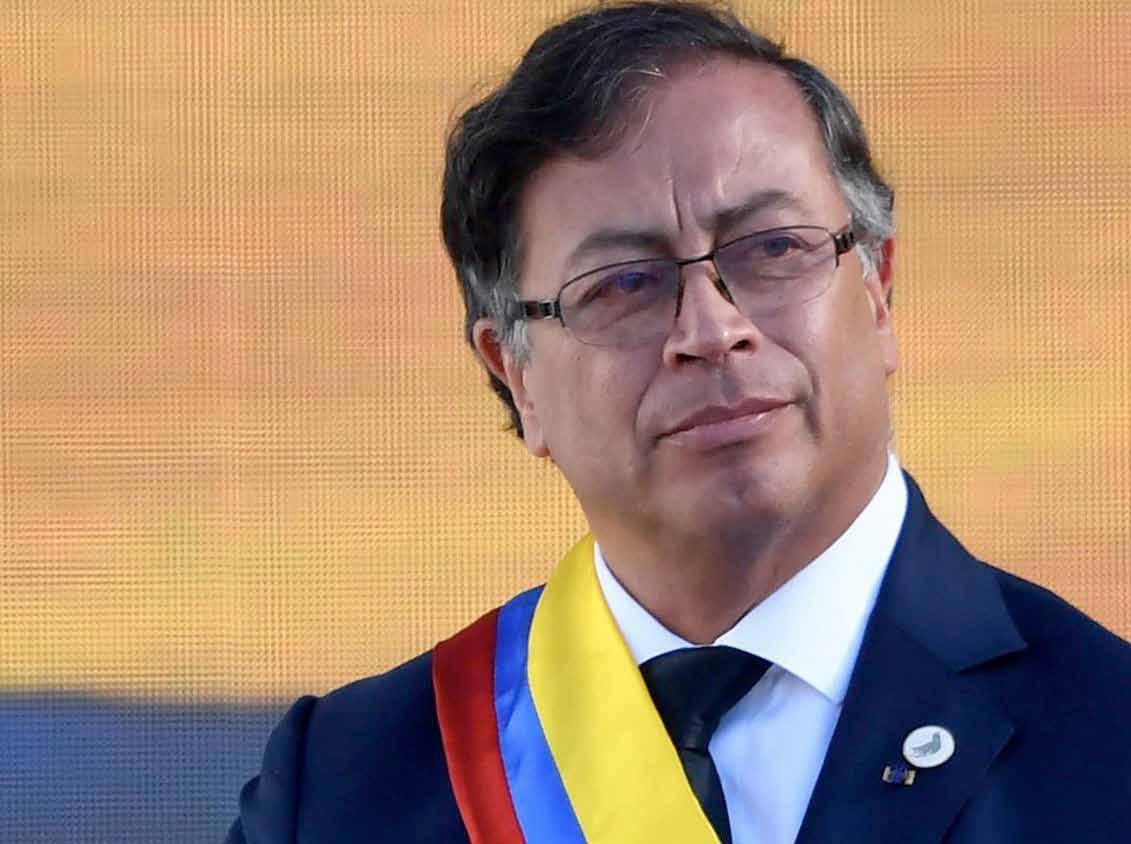
His country, Colombia, is the world’s leading illegal drug producer, and most of its drugs have been smuggled to the US, which is the world’s leading consumer of illegal drugs by monetary value: $100 billion every year.
Illegal drugs (also known as prohibited drugs) are defined as neither prescription nor over-the-counter drugs, but as one of four types: cocaine (including crack), heroin, mari juana and methamphetamine, with Colombia leading in
36 11/11/22
Report
cocaine and heroin.
In the US, opponents of drug decriminalization argue that it would increase the number of users, crime, and family break-ups.
Following are two opposing opinions:
On one side, Gustavo Petro, the new president of Colom bia, as expressed during a recent interview with the Wash ington Post.
On the other side, Senator Marco Rubio, a Republican from Florida and a leading opponent of drug decriminali zation, as are many Republicans. Recently, he wrote a let ter to President Joe Biden about the subject.
PRESIDENT PETRO OF COLOMBIA: “THE US IS THE PROBLEM”
“The booming international drug trade, more powerful than it was in the days of famed Colombian cartel leader Pablo Escobar, and the destabilizing toll it had taken on Latin American nations illustrated the resounding failure of the U.S. backed war on drugs …
We need to construct a more effective path. I would like to appeal for support from consumer nations, principally the US.
I can’t go down this path alone, given that the demand comes from outside Colombia …
I am planning to make significant changes to Colombia’s laws, which for decades have included U.S.-funded efforts to forcibly eradicate coca plants and spray pesticide on coca fields,
I believe that this reflects a desire for profound change in my country, where persistent economic inequality and the toll of the coronavirus pandemic have generated waves of popular unrest, like elsewhere in Latin America …
Throughout the decades, my country’s relations with the US had been cordial, despite its ups and downs. But, there’s no doubt that this very important relationship is changing and might look dramatically different two years from now, particularly about drug’s use and trade.
I am planning to implement ‘phased decriminalization,’ beginning with coca leaf production by small-scale farm ers known as ‘campesinos.’
The ‘campesino’ who grows coca leaf, in my opinion, is not a criminal.
My proposal was aimed in part at protecting a vulnerable part of Colombian society and eliminating one potent driv er of violence …
Another important point, as long as there’s prohibition, there will be the mafia.
But I know that decriminalizing drug production doesn’t mean ending the American cocaine market.
At least, it means taking Colombia out of this cycle of
violence …
I want to be perfectly clear, and direct about the responsi bility of consumer countries — especially the US.
The US should not hide its head in the sand. It has a greater responsibility for addressing demand at home in lieu of focusing on suppressing production abroad …”
MARCO
RUBIO: “LEFTISTS CONSPIRA CIES”
“Colombian President Petro’s drug posture towards the US is alarming.
Shortly after assuming office, he suspended arrest warrants and extraditions for members of the National Liberation Army (ELN), a US-designated terrorist organization with roughly 3,000 active members …
President Petro’s embrace of Nicolás Maduro (of Ven ezuela) is equally concerning. As you (President Biden) know, the US indicted Maduro for his nearly 20-year nar coterrorism activities …
President Petro now seeks to do the following: First, renegotiate Colombia’s alliance with the US. Second, re-align countries in Latin America to be focused against us.

Third, request a reform in our countries’ long-standing ex tradition procedures …
About extradition, he said he wanted to limit it only to those people who do not cooperate with his government. But this limitation is not only at odds with our current trea ty, which was approved by a 96-0 vote in the Senate, but, also, incentivizes criminals to avoid extradition by bribing or coercing the Colombian government officials …
As you [President Biden] told President Petro when you met him during the United Nations sessions in New York, the Department of Justice and other federal entities will be included in our decision-making when it comes to Colom bia’s drug problems.
As the Senate is one of those entities, we look forward to discussing your future meetings with President Petro and his top officials [implying the Republicans’ rejection of loosening tough laws against illegal drugs]….”==
37 11/11/22
In the US, opponents of drug decriminalization argue that it would increase the number of users, crime, and family break-ups.
Colombian President Gustavo Petro
Economy
A Wealth of Black Sand Egypt Capitalizing on Use of Resources in New Burullus Industrial Complex
By Salwa Samir
Egypt’s President Abdel Fattah El-Sisi recently inaugurated the Black Sand complex north of Cairo with the aim of extracting from the sand heavy metals which are used in many industries. The Black Sand complex in Burullus town in Kafr El-Sheikh governorate is the latest of its kind in the world using advanced mining technology. Egypt considers the project as a new addition
to the series of major national projects aimed at maximizing the benefit and optimal exploitation of Egypt’s natural resources.
According to the Nuclear Materials Authority (NMA) of Egypt, the country has 11 sites where black sand is located. It stretches along the coast from Abu Qir in Alexandria to Rafah for about 400 km. It is also found in other areas in the south of Berenice, an ancient seaport of Egypt on the western shore of the Red Sea, and in Lake

38 11/11/22
Egypt’s President AbdelFattah El-Sisi inaugurat ed the Black Sand com plex in El-Burullus, Kafr El-Sheikh Governorate, north of Cairo, on Oc tober 19, 2022. (Credit: FB of Spokesman of the Egyptian presidency)

Nasser, a vast reservoir in southern Egypt and northern Sudan.
The project is located on 35 acres, and includes a complex of six adjacent factories, each of which is specialized in extracting a specific mineral from black sand.
Additionally, there is a dredger that was specifically manufactured to transport sand from the beach to factories to produce the 6 minerals that are used in many delicate and
rare industries, some of which are nuclear materials and dealt with by the Nuclear Energy Authority.
The project will produce germanite and rutile, which are a major source for the production of titanium, a metal that is used in manufacturing the aircraft structures, missiles, submarines, space vehicles and prosthetic devices.
Titanium dioxide is a metal that is used in dyes, paints, paper, leather and medical preparations. Zircon is used in manufacturing ceramics, sanitary ware, glass, alloys, motors, dental fittings, and furnace lining.
Magnetite is used in the manufacture of sponge iron, high-quality cast iron, hightemperature concrete, mineral fertilizers, and for soil desalination.
Granite is used in manufacturing emery papers, water filters and for cutting marble with air and water pressure. Zircon is used in making electronic chips for high-tech industries, such as smartphones and electric cars.
The production capacity of the ilmenite plant is expected to reach 298,000 tons per year, while the zircon plant is about 25,000 tons per year, and the garnet plant is about 12,000 tons per year. The rutile plant will produce about 11,000 tons per year, and the monazite plant will process about 145 tons per year.
Economist Ahmed Shaker considered the project a paradigm shift in the field of mining in Egypt.
He told Majalla that the world is witnessing an economic crisis, with the increase in the prices of raw materials used in many
39 11/11/22
The Black Sand Factory will help Egypt maximize the use of available resources, reduce the import bill, and achieve a reduction in the prices of products for consumers.
Economy
industries. Hence, the establishment of a project such as the Black Sand Factory pushes Egypt to maximize the use of available resources, reduce the import bill,
The net mining resources in the project amount to 238.5 million tons, according to the Egyptian Black Sand Company, with an average concentration of heavy metals of 3.39 per cent, which is sufficient for 16 years of operation.
and achieve a reduction in the prices of products for consumers.
“This is a positive step in the localization of the industry, by increasing industrial exports, providing job opportunities and increasing the supply of products in the local market.”
Gamal Noureddin, Governor of Kafr ElSheikh, said that this project provides about 5,000 direct and indirect job opportunities for the people of the governorate, which is equal to more than 85 per cent of the people working.
In the late 1930s, Egypt began to exploit the black sand in conjunction with a Greek group, but the separation of minerals was being done using primitive methods.
Over the past years, attempts to exploit the black sands have continued in Egypt, specifically in the Burullus town, which
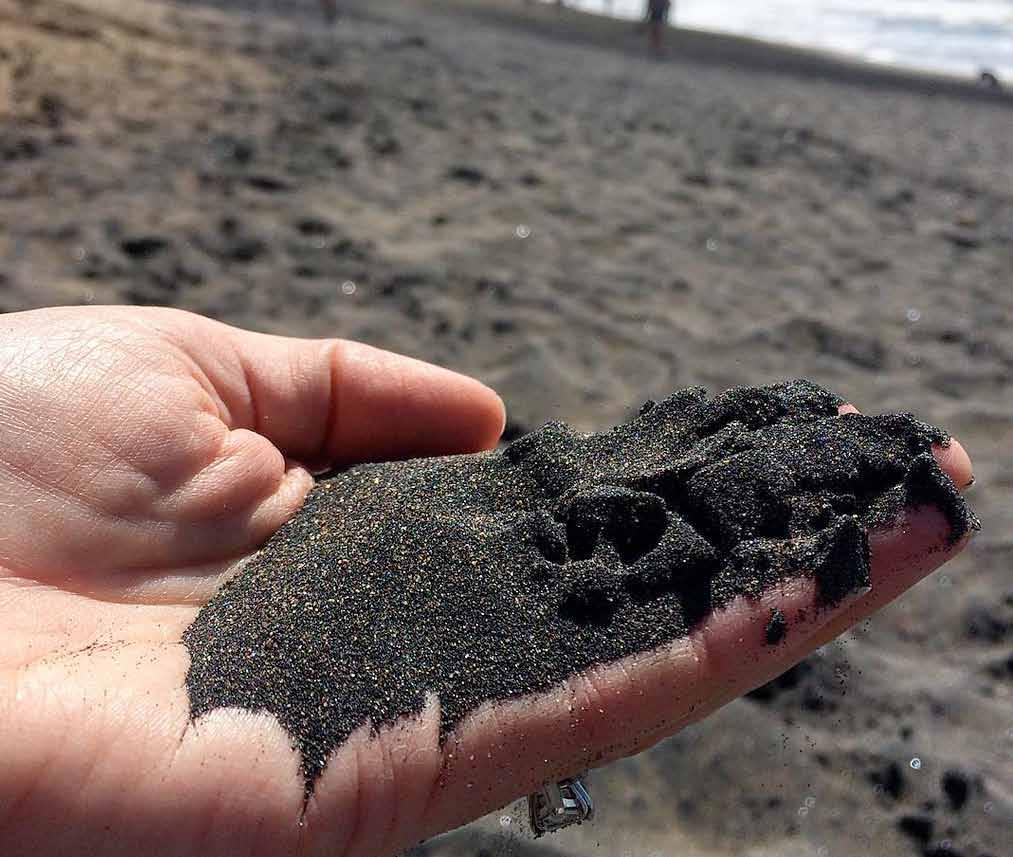
40 11/11/22
Black sand stretches along the coast from Abu Qir in Alexandria to Rafah for about 400 km.
possesses the largest concentration of economic minerals.
However, the lack of political will for implementation prevented the completion of the black sand factory in Kafr El-Sheikh, after its foundation was laid in the 1990s.
After President Sisi took over, he renewed interest in this issue, as the first Egyptian mining company was established in 2016 called the National Company for Black Sands in Burullus.
The first stage of mining started from the Burullus dunes, which extend along the coastline for 16 km for a total of 3,500 feddans, using the Dutch-made “Long Live Egypt” dredger.
This is the first environmentally friendly electric-powered dredger that pushes water towards the sand dunes and flows to the bottom of the artificial lake. In addition, the
dredging works with a depth of up to 18 meters to draw water mixed with sand to the main pump of the dredger. It is then pumped back to the floating concentrate plant inside the lake via pipelines.
The net mining resources in the project amount to 238.5 million tons, according to the Egyptian Black Sand Company, with an average concentration of heavy metals of 3.39 per cent, which is sufficient for 16 years of operation.
Dr. Hamed Mira, head of the NMA, said that Egypt contains 5 billion tons of black sand that is sufficient for the next 200 years, according to the areas that have been discovered so far.
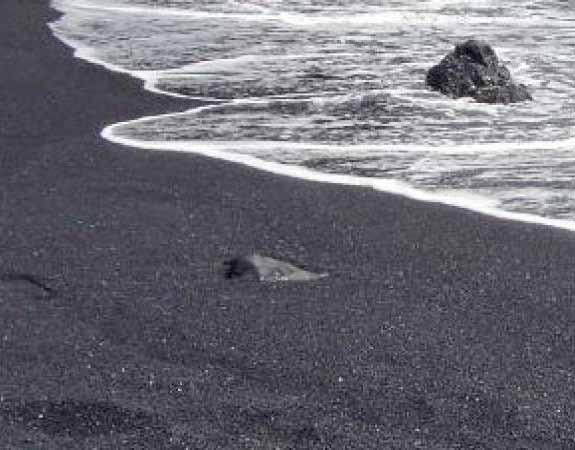
He pointed out that the price of a ton of black sand varies from one mineral to another.
The ton price reaches 3,200$ and there are minerals that are worth more than that.
41 11/11/22
Black sand stretches along the coast from Abu Qir in Alexandria to Rafah for about 400 km.
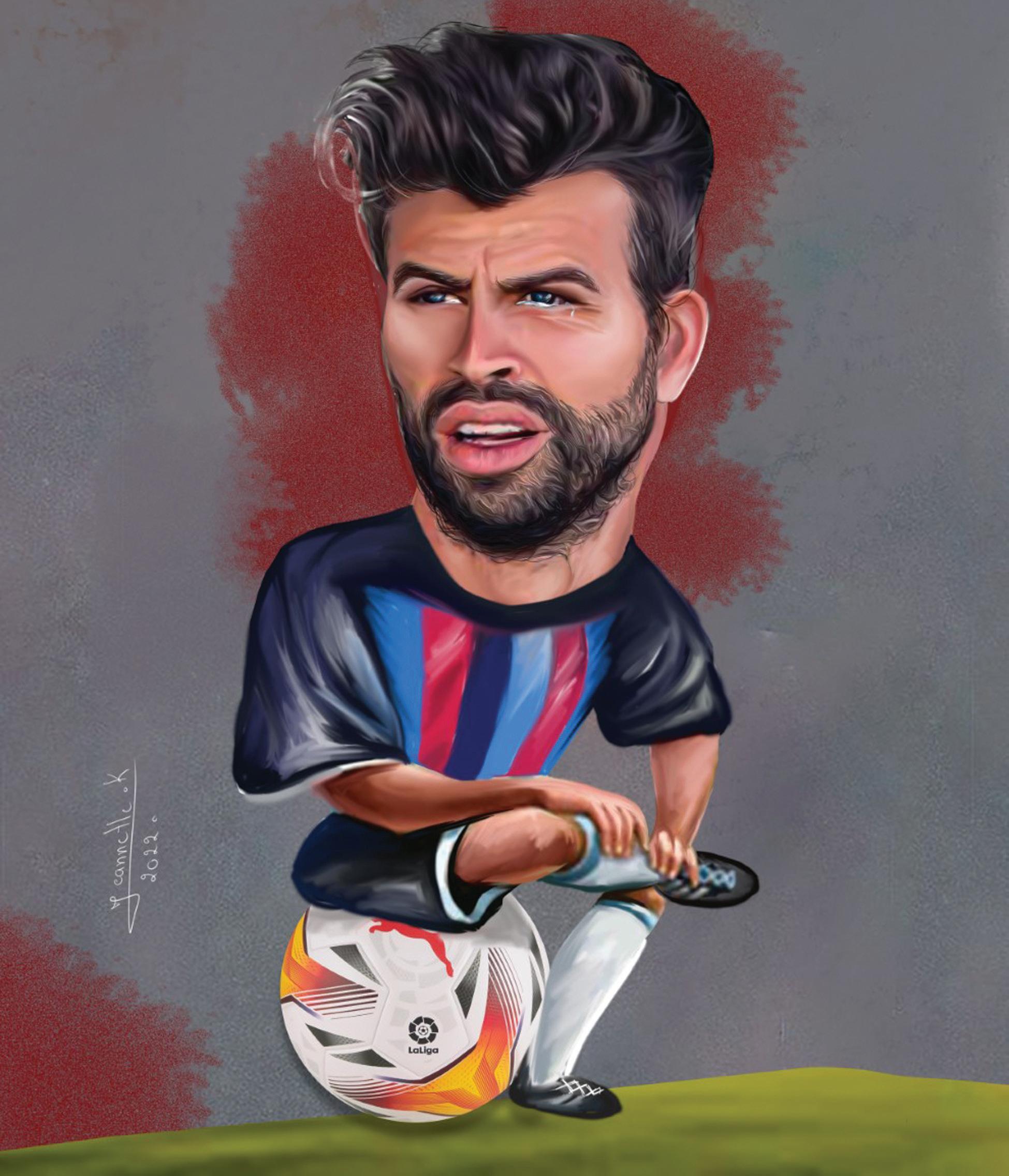
2 A Weekly Political News Magazine www.majalla.com Issue 1930- November- 11/11/2022
Retired
Player,
Promising Investor
Piqué:
Football
But

rtA Just Stop Oils
A wave of art criticism is sweeping through the galleries of Europe
By Bryn Haworth
One cannot always be in the right place at the right time, so I shall never know what effect the recent splashing of soup on Van Gogh’s ‘Sunflowers’ might have had on me, had I been there to witness it in real time. Would I have been hor rified? Or, when one of them asked “What is worth more, art or life?”, would I have seen the light and spurned the moribund unrealities of the aesthetic realm in preference for the right of a younger generation to don a T-shirt, dye their hair pink and live, live, live I tell you! I don’t rule it out; I can be a proper philistine when the mood takes me. But, alas, I was not around to see it happen, and am therefore as perplexed as just about everyone else.
On one recent trip to the capital, I did get lucky enough to find myself in the
right place at the right time. Back in the days (a little over a fortnight ago) when it was still possible for the public to see great masterpieces without so much se curity they need a lorgnette to make them out across a cavernous room, I found myself striding excitedly across Trafalgar Square. I was on my way to see the latest exhibition at the Royal Academy, dedicated to William Kentridge’s reflec tions on the injustices of post-colonial South Africa. Way above me, beyond the reach of the woke hordes and untroubled by the animadversions of Afua Hirsch, Vice-Admiral Horatio Nelson contended with the guano menace, as he has done since 1843.
I was heading for Pall Mall when I had the good fortune to stumble upon an unexpected art event with African associations: the installation of a Malawian freedom fighter on the fourth plinth. For those unfamiliar with the plinth, it is
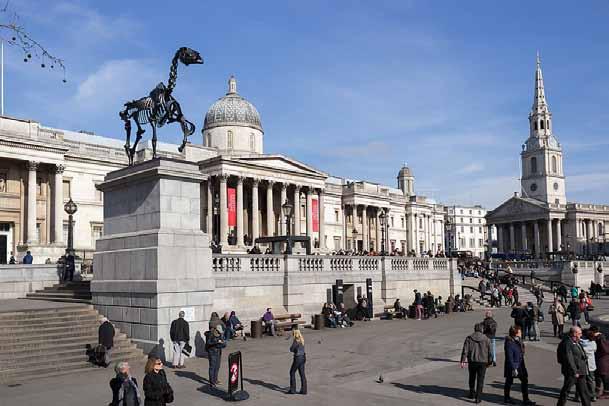
44 11/11/22
The Anatomy of the Horse
as much a part of the monumental furniture of Trafalgar Square nowadays as Nelson himself. Originally intended for an equestrian statue of William IV – the same monarch who opposed the abolition of slavery so vehemently in the Lords – it remained empty for decades owing to a shortage of funds. Then, around 2003, the Mayor of London began commissioning things to oc cupy it. Given that the original intention had been to place an equestrian statue on the plinth, perhaps the most poignant installation was a skeletal horse by Hans Haacke (see above). Called ‘Gift Horse’, it had an electronic ribbon tied to its front foot which displayed, live, the ticker of the London Stock Exchange. Other ideas have included a statue of a man in a loincloth entitled ‘Ecce Homo,’ numerous members of the public invited by Antony Gormley to do their thing, a ship in a bottle, a blue cockerel, a creature from ancient Assyrian mythology, a fly on a dollop of cream and a transparent inverted version of the plinth by Rachel Whiteread (see below) which, as if things weren’t bad enough already, amounted to a fifth empty plinth.

perhaps this only demonstrates how right I was. In 2013, Hammond suggested that Lady Thatcher should be permanently commemorated on the plinth, a stroke of genius supported by Norman ‘on-yer-bike’ Tebbit, the then Prime Minister, David Cameron, the then London Mayor, Boris Johnson, and a man whose name I shall not stoop to repeating here, but which sounds remarkably like a middleclass garage. In the words of someone or other, no, no, no, and no, no. Anyway, as I crossed the square, I noticed a small crane close by the plinth and two men inspecting a pair of new statues placed upon it. One of the men, it turned out, was the artist, Samson Kambalu. He was brought back to the ground rather gingerly after the inspection and I managed to get a shot of him on solid earth. You will notice he’s wearing a hat, of which more anon.
Prize for the most tin-eared suggestion, though, must go to Philip Hammond. Odd really, as I always thought ‘Spreadsheet Phil’ had a sense of humour, though
The statues, sculpted from black stone, are based on a photograph dating back to 1914 which was taken outside the Baptist church where the black man was preacher. His name was John Chilembwe. The white man was a European mis sionary called John Chorley. They are roughly the same height in the photo, but on the plinth Chilembwe dwarfs the missionary. The whole work is called ‘Ante lope’, apparently because the preacher’s hat reminded the artist of an antelope’s horns. He told the Guardian that the antelope is ‘the most generous animal in the bush, recklessly, stupidly generous.’ The real point about the hat, however, is that Kambalu claims it would not have been worn by a black man in colonial Malawi if a white man was present. The one in the photograph, therefore, rep resents a subversive act.
In fact, it may only have been the custom that black men tipped their hats in the presence of white men, a minor difference admittedly, but the whole matter of hats and how they were worn is germane to the significance of the statues. Clear
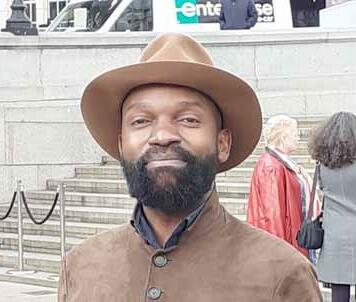
45 11/11/22
The people who feel most strongly about an issue don’t always want to debate their tactics.
Rachel Whiteread plinth. A Friday night hallucination?
Samson Kambalu
ly, the disproportionate height of the men acts as a retrospective assessment of their importance. To this day, Chilembwe is commemorated on Malawi’s stamps and celebrated with a national holiday. He is seen as a freedom fighter way ahead of his time, despite the fact that his uprising was a failure, and led both to his death and the razing of his church to the ground. The theme of reassessment is familiar in this country, but it has thus far been applied mostly to statues of men who owned slaves in the Caribbean. There have also been calls for monuments associated with colonialism to be removed, most famously the one to Cecil Rho des in Oxford, though so far Oriel College has managed to cling on to the statue of one of its benefactors. Rhodes was the man who built a personal empire in Africa, had an entire African country named after him and, notoriously, claimed he would annex the planets if he could. It seems appropriate, then, given the efforts to reassess the legacy of colonialism, that a statue to a black freedom fighter should be erected in London’s grandest public square. As the artist has said, “we have to start putting detail to the black experience, we have to start putting detail to the African experience, to the postcolonial experience.”
The question is just how much of that detail we are made privy to. One incident
from the failed uprising has not been mentioned by the artist, nor is there an ex planation beneath the plinth, and the accounts by the BBC and the Guardian also neglected to mention it. Indeed, I have only found one reference to the statue on the internet which alludes to the incident at all. And yet, the Wikipedia entry for Chilembwe makes no attempt to conceal the fact that the preacher, when ordering white men only to be killed by his henchmen, called for the head of one in particular, William Jervis Livingstone, to be brought to him. Livingstone was the manager of the Magomero Estate in Nyasaland (present-day Malawi). He was known to beat the men employed on the estate. When his head was duly delivered, impaled on a pole, Chilembwe placed the grisly trophy by the altar and preached a sermon beside it.
Could it be that, after a string of inventive and often joyous creations, the fourth plinth is now home to an unhinged zealot? Though the artist prefers not to high light the fact, on this occasion it’s fair to say the devil was in the detail. But hey, those were different times. Perhaps Chilembwe was simply making an ironic, tongue-in-cheek reference to Joseph Conrad. Pretty drastic literary allusiveness, I know, but one cannot always apply one’s own narrow moral prin ciples to the actions of others, however wantonly destructive they may seem to us now.
As I said, I was lucky on that occasion, but one cannot always be in the right place at the right time and, sadly, my frequent visits to the National Gallery did not include the day the two protesters decided to hurl soup at a Van Gogh. Instead, I merely heard accounts of the incident afterwards. Why, I asked my self, would anyone attack one of the Britain’s favourite pictures? And why with soup?
Well, according to Claire Armitstead in the Guardian (14 October 2022), the action displayed situationist ‘wit’ – not unlike the incident with a decapitated head, then – since it alluded to Andy Warhol’s critique of exactly the sort of industrialisation the protesters were blaming for the destruction of the planet. However, even if the soup was indeed this eloquent, the protesters were rather

46 11/11/22
rtA
One activist said that their action was symbolic of a movement “united by the will of influencing our government to make the right choices in order to mitigate climate change.”
Sunflowers
less forthcoming. When one of them expressed a preference for real flowers over painted ones, she only left open the possibility that, contrary to the spelling on her T-shirt, she was actually intent on stopping oils, as well presumably as artworks in other media.
The people who feel most strongly about an issue don’t always want to debate their tactics. When a liberal newspaper set up a debate between Rupert Read, a climate activist opposed to such actions, and Indigo Rumbelow, who strongly advocates them, Read called upon climate activists to ‘bring the public with us’ in developing a ‘new moderate flank’. Rumbelow, on the other hand, was more in favour of the militant strategy known to behaviourists as tossing one’s toys out of the pram. She wasn’t even able to control her anger long enough to answer the question:
‘You’re asking about tactics – which ones work and which ones don’t. First let me throw a question back to readers…’
Less than two sentences in, and she was already throwing things: ‘…why is this what your newspaper wants you to think about? Why do they want you to pit people taking action against each other? As they’ve pitted me against Rupert Read here? Why do they want you to obsess over who is right and who is wrong when climate breakdown looms over us all?’
In short, the tactics are not up for discussion. How silly of Mr Read to fall for the newspaper’s fiendish trick and discuss tactics like that. It’s a distraction to get in a flap about right and wrong when the Earth is in peril. Ms Rumbelow then proceeds to discuss how some tactics, such as tweets and marches and so forth, have failed, while in contrast the Suffragettes succeeded, though she neglects to mention the obvious precedent of Mary ‘Slasher’ Richardson, who sought to win the hearts and minds of the British people by attacking the Rokeby Venus with a meat cleaver. That was tactics, obviously. Why the obsession with tactics? She ends by asking, ‘Honestly, answer me this: if our government is ready to destroy humanity in the race to make oil profits, why would it listen to a tweet?’ (Observer, 30 October 2022)
To which the world-weary reply would be, ‘Why would it care how many cans of soup you throw at the nation’s favourite pictures?’
My own preference is to look, precisely, at the tactics, since it is obvious that Mary ‘Slasher’ Richardson is not the best model for effecting change. Women’s suffrage was not won by attacking Velazquez. Indeed, women did not win the vote till after the Great War. Thereafter, the world moved on. By 1932, ‘Slasher’
had joined Oswald Moseley’s Union of Fascists, claiming “I was first attracted to the Blackshirts because I saw in them the courage, the action, the loyalty, the gift of service and the ability to serve which I had known in the suffragette movement.”

She had a genius for tactics, did our Mary. She was also prepared to squander her hard-won vote on the tin-pot founder of Britain’s fascist party who would happily have terminated democracy altogether. Moseley was certainly a coura geous figure. In his declining years, he would vent his frustration by strangling chickens.
If one wishes to understand the thinking behind the ‘Sunflowers’ attack, a speech delivered by a Dutchman in The Hague’s Mauritshuis Museum repays closer inspection:
“How do you feel when you see something beautiful and priceless is apparently being destroyed before your eyes? Do you feel outraged? Good. Where is that feeling when you see the planet being destroyed?” (Guardian, 27 October)
The first Dutchman delivered this speech immediately after tipping soup (one detects a persistent motif here) over the head of a second Dutchman, which ended up down his back, as the second Dutchman attempted to glue his own face to Vermeer’s ‘Girl with a Pearl Earring’. This he did without great success, but then no one had ever attempted to do this before; it is not one of those crafts passed down from generation to generation. Though it cried out for an explanation, the speech made no reference to the glu ing attempt, nor did it allude to the soup, presumably on the assumption that the soup spoke for itself. Instead, the speech was designed to explain the choice of Vermeer for the attack, in a manner that even the people standing nearby found confusing, some of whom expressed their dismay and told them to stop, which is ironic, since they were supposed to tell that to the oil companies. The fact that the bystanders were able to speak at all was surprising, as most members of the public present were rendered speechless, and were probably thinking along these lines: that it had taken one Dutch genius to paint the portrait, and one Dutch idiot to try gluing his face to it.
You can see the problems here, from the point of view of optics, public percep tion and communication. In the case of the Dutchmen, I dare say it all boiled down to a lack of planning. Just as there was no obvious link between soup and Van Gogh’s vase of flowers, so its relevance to Vermeer’s ‘Girl with a Pearl Earring’ was unclear. In other instances, there has been a far closer association with the content of the picture, to the point where the protesters have begun to sound like disaffected art historians. After a reproduction of Leonardo’s Last Supper came under attack at the Royal Academy, Simon Bramwell – who had anticipated the Dutch attack by ‘affixing’ himself to it – told Deutsche Welle
47 11/11/22
Imagine the way it would enhance awareness among the public of the justice of their cause, if the Just Stop Oil campaigners had a fraction of John Ritchie’s spitting skills.
Oswald Mosley. Big mouth strikes again
“It is possibly one of the most iconic representations of Western values and spirituality. The painting also resonates with ‘crop failure’ and the increasing malnutrition linked to climate change. We have a whole generation for whom it may be the last supper.” I mean, eat your heart out, Andrew Graham-Dixon. A similar symbolism was highlighted by two members of the Italian climate activist group, Ultima Generazione (Last Generation), when they glued them selves to the ancient statue of Laocoön at the Vatican Museums. Priest of Apollo in the city of Troy, Laocoön had warned his fellow Trojans against taking in the wooden horse left by the Greeks outside the city gates. But, as with the appeals
of today’s climate scientists, very few listened, and the city was destroyed: “This statue reminds us of the sad story of the Greek priest that tried to save himself, his children and all citizens of Troy,” said Laura, one of the activists. She added that their action was symbolic of a movement “united by the will of influencing our government to make the right choices in order to mitigate climate change.”
On Last Generation’s website, Aimee von Baalen, the organisation’s spokesper son, explained their attack on a Monet painting of hay ricks as follows: “Monet loved nature and captured its unique and fragile beauty in his works. How can it be that so many are more afraid of damage to one of these images of reality than they are of the destruction of our world itself, whose magic Monet so admired?” She added, “There will be no time for admiring art if we fight each other over food and water!”
I ask you, how many iconoclasts in the past were this sensitive to art history? But perhaps this is itself a problem. Everyone’s a critic nowadays. Just as we are at liberty to like or dislike everything, so we can all impersonate the art experts. It must have been hard for the museum authorities in Potsdam to know that the Philistines were upon them. Until, that is, it was too late, when the mashed po tato had already turned their Monet into a shepherd’s pie. One imagines a guard being interviewed in the aftermath: “You can’t tell who the vandals are these days, so refined are their sensitivities!”

It was easy back when old ‘Slasher’ was around, you simply had to check visi tors as they came in, and confiscate their meat cleavers. Or firearms: in an ex hibition the National Gallery put on recently, called ‘If you prick us, do we not bleed?’, Ali Cherri created installations representing a whole range of attacks on the gallery’s collection, including one instance where the attacker had shot a Leonardo cartoon. Now, museum security guards also have to make sure no foodstuffs are smuggled in, though they can take some comfort from the knowl edge that today’s protesters are keen to avoid damaging the art. In the cases of Van Gogh and Vermeer, the protesters made sure beforehand that the pictures were protected by glass.
In view of this solicitude on the part of the modern vandal, I have a modest pro posal to make: that henceforth all protesters confine themselves to a campaign of principled expectoration. Mashed potato can easily be confiscated, but no one can take our saliva away. Moreover, just think how much clearer the mes sage would have been had the Dutchmen in the Hague refrained from making speeches and simply gobbed in the painting’s direction.
I vividly recall, from my school days, how John Ritchie managed to gob almost a hundred yards, and the important lesson I took away from that was this: success at anything requires dedication. There will be those who complain that we are all born drooling, that there’s nothing clever or accomplished about it, but how wrong they would be. John Ritchie was no child prodigy when it came to the propulsive ejection of spittle. He had practised, assiduously, over the weekends and in every free moment he could find, honing his gobbing skills to a point where both distance and accuracy were the wonder of his fellow schoolboys. He was even able to invest his gobs with a kind of viscosity one did not encounter in the average, casually expelled phlegm observed on the public highway. The lat ter would mostly disappear, almost at the moment it fell, evaporating perhaps, or seeping between the cracks in the pavement, unseen. But Ritchie’s globules had a longer tenure; they stayed on the surface of the playground till the very instant that another boy inadvertently stepped in them and walked them into the school corridors. And yes, in a deeper, more spiritual sense, they stood the test of time,
48 11/11/22 rtA
Most members of the public present were probably thinking along these lines: that it had taken one Dutch genius to paint the portrait, and one Dutch idiot to try gluing his face to it.
Girl with pearl earring
having about them a nimbus of immortality that has preserved their greenishyellow hue and tensile strength in my mind to this day, some fifty years later. I don’t recall Ritchie ever having expressed an opinion regarding a) art or b) the destruction of the planet by the burning of fossil fuels, but then he was a simple soul at the time I knew him. Not academically inclined, wild and blessed with a daft sense of humour, he would never knowingly have killed a cat. I will say this much, that the burgeoning protest movement has need of his gob bing skills. Imagine the way it would enhance awareness among the public of the justice of their cause, if the Just Stop Oil campaigners had a fraction of John Ritchie’s spitting skills. Of course, they would have to practise as tirelessly as he did. Spitting ranges could be built somewhere in the countryside, perhaps in the barns of sympathetic farmers. Here, they could hang actual size reproductions of Van Gogh, Monet and Vermeer at appropriate distances and work on their technique. The attacks themselves would require the minimum of planning. To obviate the use of tape measures on location, they could study floor plans and calculate the optimum trajectories. By the end, they would be able to attack an entire room-full of paintings without having to go anywhere near the security wire. Firing gobs at great speed, and with wondrous accuracy, they could take out maybe ten masterpieces a minute from a position at the centre of a room. It would be virtually impossible for the authorities to shut such protests down. Signs, such as one sees in Paris forbidding expectoration, would be futile. In
to the disgust of all clean-living filmgoers) by spitting at his own canvas, exactly as if this was an intrinsic part of his Romanticism. It was a repulsive habit, yet his greatest painting is still by far the nation’s favourite, as confirmed by a poll taken for Radio 4’s Today programme as recently as 2005. It even appears on the much devalued twenty-pound banknote, along with the artist’s self-portrait. Attacking the ‘Temeraire’ would risk alienating the maximum amount of art lovers. Which is precisely why the expectorators should not be daunted. After all, according to Liz Truss, it was Seneca who said “It is not because the names of dead philosophers are hard to pronounce that we do not dare quote them, it’s because we do not dare quote them that they are difficult to pronounce.”
The key to maximum visibility is to obscure the view of what people most want to see. This I saw amply illustrated when I attended an Extinction Rebellion protest. The police led the demonstrators between the crowd and what they had come to see: the various floats, military bands and people on horseback mak ing up the Lord Mayor’s Parade as it moved down Fleet Street, the Strand and eventually to Trafalgar Square. After having interposed ourselves between the crowd and the spectacle, we agitators were exposed to the full wrath of the pub lic, some of whom had waited all year to see this. Meanwhile, the police were admirably restrained. After the parade had passed and the public had dispersed, they contented themselves with making us traipse through the dung the horses had left behind.
It goes without saying, a well-choreographed attack on Turner’s masterpiece would not require activists to interpose themselves between the public and what they wanted to see. Visitors would only be obliged to stand aside long enough to avoid the parabola described by the spittle, and once it made contact with the masterpiece, the spittle would only enhance the verisimilitude of the seascape. There is also a clear symbolic justification for spitting at the image, in the shape of the little tug belching smoke as it drags the old warship to the breaker’s yard. It’s hard to imagine how Turner could have devised a more compelling image for our times – nothing less than the triumph of fossil fuels over wind power.
Finally, gobbing over this image with great élan would have the virtue of authen ticity, as who can doubt it is an action of which Turner himself would have heart ily approved? Not to mention John Ritchie, or (as he would later be known to the world, many moons after becoming my boyhood idol) the immortal Sid Vicious.

stead of being seen by the gallery-going public as puerile, self-righteous, de structive, iconoclastic, philistine, dim-witted, counter-productive and ignorant of the basic skills of persuasion necessary to achieve progressive change in a modern society, the spitters would be celebrated for their range and accuracy, just as surely as John Ritchie was, back in my childhood days, by every fairminded onlooker. Eventually, the resulting upswell of public sympathy would enable them to take on the greatest challenge of all, that holy grail of iconoclasts, equivalent to the toppling of Nelson’s column itself: Turner’s painting of ‘The Fighting Temeraire’.
Right now, in the absence of a properly organised campaign, the ‘Temeraire’ seems sacrosanct. Although the casting of Timothy Spall as the great painter convinced everyone that the artist was a thoroughly weird individual, he was indubitably British. People were prepared to overlook the way Turner would incorporate his own spit into his paintings. He did not achieve this by some bour geois method of applying his saliva judiciously to the palette. Bear in mind, his father mixed the colours for him. No, he did it (as Timothy Spall demonstrated,
William
 Ali Cherri’s ‘If you prick us, do we not bleed?’ is showing at the Herbert Art Gallery & Museum in Coventry until 8 January 2023.
Ali Cherri’s ‘If you prick us, do we not bleed?’ is showing at the Herbert Art Gallery & Museum in Coventry until 8 January 2023.
49 11/11/22
Kentridge is at the Royal Academy in London until 11 December 2022.
Turner’s painting of ‘The Fighting Temeraire’
Sid Vicious
ovies
Another Exquisite Tale of Cinema from Hong Sang-soo
‘The Novelist’s Film’: Finding Creative Renewal in
Unexpected Places
By Justin Chang
Shortly before settling into “The Novelist’s Film,” a tense, absorbing and finally enchanting new movie written and directed by Hong Sangsoo, I couldn’t help but cycle through a flurry of familiar questions: Will this one be in color or black-and-white? Will the protagonist be a writ er, a painter, a filmmaker or an actor? Will the story (or stories) unfold in strictly linear fashion, abruptly hit the reset button halfway through or play other gently mind-bending games with time? And most importantly, what will everyone drink: soju, as usual, or something a bit less conducive to Hong’s brand of reckless, well-liquored truth telling?
To answer those questions in no particular or der: They stick to coffee until late in the game, when they consume bottle after bottle of sweet, milky makgeolli. The story flows in chronologi cal order, which doesn’t make it any less strange or mysterious, in its way, than it would’ve been with a few of the director’s signature temporal
twists. The movie was shot in sharp, high-con trast black-and-white, in the stationary long takes and medium group shots best suited to the char acters’ long, leisurely conversations. (Hong, as usual, served as his own cinematographer, editor and composer.) And the protagonist, per the ti tle, is a novelist, albeit one with a severe enough case of writer’s block to consider trying some thing new.
Trying something new, of course, is something that Hong’s detractors likely wish he would do more often — or perhaps not so often, given his unceasing productivity and unflappable con sistency. (“The Novelist’s Film,” which won second prize at this year’s Berlin International Film Festival, is the director’s 27th feature and his third picture to be released in U.S. theaters this year, after “Introduction” and “In Front of Your Face.”) But those who love and admire Hong’s work know that the pleasure of it lies precisely in that consistency. With the subtlest of variations and the most quotidian of details, he and his actors unlock piercing insights and
50 11/11/22
M
Kim Min-hee, left, and Lee Hye-young in the movie “The Novelist’s Film.” (dpa/Zuma Press/TNS)

rivers of feeling.
One of the chief pleasures of “The Novelist’s Film” is the chance to witness Hong’s continu ing collaboration with the veteran actor Lee Hye-young, who, after several years’ absence from the screen, made a comeback of sorts in “In Front of Your Face.” Here she plays the novel ist, Jun-hee, who in the opening moments arrives at a bookstore, located some distance outside Seoul, that’s run by an old, unnamed friend (Seo Young-hwa) who used to be part of her tight-knit literary circle. The two haven’t seen each other since, and in their tense but not unfriendly con versation, you sense that Jun-hee isn’t just try ing to rekindle an old bond. She’s curious about what it would mean to give up the writer’s life, something she’s contemplating doing herself.
Jun-hee bids adieu to the friend and her kind younger assistant (Park Mi-so) and then — be cause a Hong movie can never have too many awkward reunions — promptly runs into another old acquaintance, Hyo-jin (Kwon Hae-hyo), and his wife (Lee Eun-mi). More coffee ensues, and more openly barbed conversation, too: It gradu
ally develops that Hyo-jin, a successful director, was once set to adapt one of Jun-hee’s novels — a project that fell apart under circumstances for which she clearly assigns him some of the blame. “You’re ambitious. Extremely so, I’d say,” Junhee says, punctuating her every sentence with a casually lacerating laugh. (Lee’s gift for subli mating and venting her character’s rage is but one element of her remarkable performance.)
might be inclined to think of Hyo-jin as a
51 11/11/22
You
“The Novelist’s Film” is the chance to witness Hong’s continuing collaboration with the veteran actor Lee Hye-young, who made a comeback of sorts in “In Front of Your Face.”
ovies
stand-in for his creator (he wouldn’t be the first). But the greedy, budget-hungry filmmaker that Jun-hee holds in such barely disguised contempt doesn’t sound much like Hong, and as the scen ery shifts to a lovely outdoor walking path, the director throws in a curveball — and a third un expected reunion — with the introduction of Kilsoo (Kim Min-hee, Hong’s most frequent col laborator), an actor whom Hyo-jin recognizes. Kil-soo clearly stirs something in Jun-hee, who regards this smiling, leather-jacketed beauty with a mix of warmth, protectiveness and a faintly ac quisitive desire.

Would Kil-soo perhaps consider acting in the short film that Jun-hee, frustrated by her abort ed project with Hyo-jin, has been interested in writing? The answer to that question is a tan talizing maybe; Kil-soo is both intrigued and wary. And what kind of a film is Jun-hee try ing to make? What she describes sounds a bit like, well, a Hong Sang-soo movie. It’ll have a scripted story of sorts but not be rigidly behold en to it, and it will draw much of its inspiration from the actors and locations. Does this make Jun-hee the movie’s real stand-in for Hong? It’s doubtful. She might avail herself of some of the director’s methods, but her every word brands her as very much her own independent thinker and artist.
So does the short film she ends up making, of
which we eventually do see a brief, beguiling snippet. The structuring theme of “The Novel ist’s Film” may be artistic frustration, the kind that can spur a writer to call it quits, an actor to take a break and even an established director to reconsider his calling. But it’s also very much about finding creative renewal in unexpected places — a bookstore, an outdoor trail, a movie theater — and learning to embrace, rather than resist, life’s beautifully meandering flow. In one of the movie’s best, most bracing scenes, Jun-hee declares, “Everyone wants to realize their life in their own way.” Their art, too, though one of the wonders of Hong’s cinema is that we can scarce ly tell the two apart.
This article was originally published by Los Angeles Times.
NOVELIST’S FILM’
(In Korean dialogue with English subtitles) No MPAA rating Running time: 1:32 How to watch: In theaters
‘THE
52 11/11/22
‘The Novelist’s Film’
“The Novelist’s Film” may be artistic frustration, the kind that can spur a writer to call it quits, an actor to take a break and even an established director to reconsider his calling.
M

Po rt ra it
Piqué: Retired Football Player, But Promising Investor
By Majalla Illustrated by Jeannette Khouri
Gerard Piqué, a Spanish professional football player in Barcelona and the Spanish national team, an nounced his retirement from football on November 5 after a long career during which he won a number of titles and awards.
Piqué was born on February 2, 1987, into a very wealthy Catalan Catholic family. His father was a successful business manager and lawyer. His mother was a director of the Spinal Injury Hospital in Bar celona while his maternal grandfather was a former Vice President of FC Barcelona.
Since the beginning of 2011, he had been in a rela tionship with Colombian singer Shakira, who is 10 years older than him.
Piqué got separated from Shakira in June 2022 af ter reports of his cheating on Shakira with a student working in his office who organizes events for his company.
Piqué studied at La Salle Bonanova, a prestigious school. After completing his secondary education, he started his career by studying business adminis tration. He had to give it up because of football although he returned to his studies afterwards and received a master’s degree in business from Harvard University in 2017.
He joined FC Barcelona Academy in 1997, at the age of 10. He joined the Club’s youngest boys team (Alevín B), and was among the main defenders of the team.
He played with the Academy for several years dur ing which he passed through various levels and cat egories.

During his stay at the Academy, extending from 1997 until the end of the 2003-2004 season, Piqué developed into a skilled player and showed a great ability to adapt to different positions on the field, and was known for his ability to score goals despite his defensive position.
Piqué left Barcelona at the end of the 2003-2004 season, joined the English club Manchester United, and won the domestic league title and the European Champions League in 2008.
Piqué first appeared with Manchester United in October 2004 as a substitute for John O’Shea, and played a central defense in the Carling Cup match against Crewe Alexandra, which his team won.
In March 2006, he made his debut with the team in the English Premier League match against West Ham United at Old Trafford, where he played as a right-back, and was a substitute for an injured Gary Neville.
Manchester United loaned him to Real Zaragoza in the Spanish League for the 2006-2007 season, and
then had the opportunity to play 22 matches along side Argentine Gabriel Milito. However, he also spent a lot of his time on the bench.
Piqué returned to Manchester United in the football season 2007-2008 and spent a successful season in the Champions League. He scored the first of Man chester United’s four goals in a 4-0 win at home against Dynamo Kyiv on the seventh of November 2007, and scored his second goal in an away match against Roma on December 12, 2007.
On May 27, 2008, Piqué returned to Barcelona, and signed a 4-year contract, with a full purchase condi tion of 5 million euros, and played with the Spanish national team in the period between 2009 and 2018. He won the World Cup in 2010 and the European Nations Cup in 2012. He retired from international football after the 2018 World Cup in Russia.
Piqué is a successful businessman. Together with Hiroshi Mikitani, owner of Rakuten Group, he founded Kosmos in 2017. Among the company’s most important projects are managing the Davis Cup and Esports tournaments.
He also participated in various investments in differ ent sectors such as agriculture and fashion. Piqué’s companies acquired the shares of Andorra Club, which succeeded in ascending to the Spanish third division. His sports investments did not stop there, but also included a company to develop the Davis Cup tennis tournament.
54 11/11/22
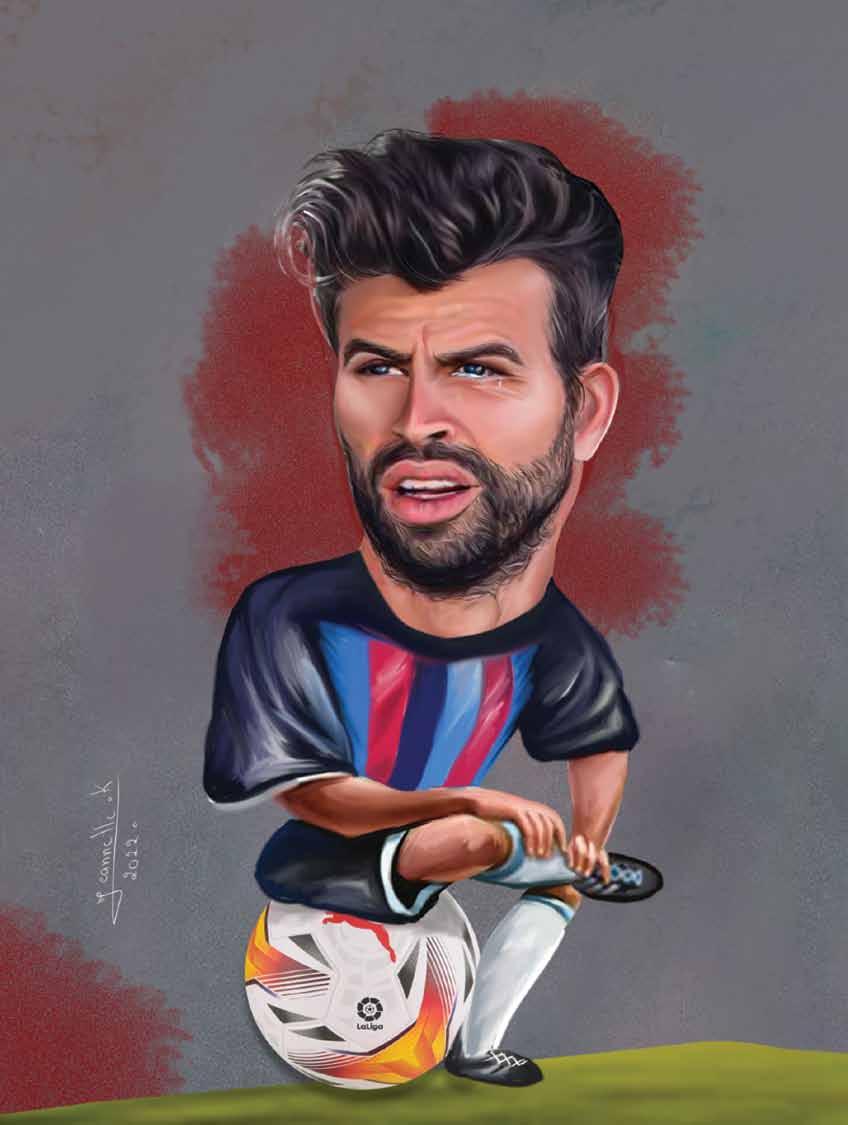
4 Creative Ways NASA Encourages Innovation
NASA’s Lessons for Managing Knowledge, People, and Projects
By Gwen Moran
When part of your mission is sending people into space, you’d better have the best people working on the job. Since its creation in 1958, the National Aeronautics and Space Administration has had a reputation for attracting exceptional talent and leadership to work on some of the most complicated challenges and tasks humans have ever addressed.
But whether engineering the next spacecraft, addressing
climate change, or finding solutions to ventilator shortages in the early days of the pandemic, NASA leadership knows some essential truths about helping the best talent unleash innovation, find solutions, and complete successful missions: It’s about the people. Even with the best technology and processes, human skills are necessary to get things done. Creating an environment where people thrive is the key to successful projects, says Ed Hoffman, coauthor of The Smart Mission: NASA’s Lessons for Managing Knowledge, People, and Projects.

56 11/11/22
Technology
Hoffman ought to know. He spent more than three decades with NASA, becoming the agency’s first chief knowledge officer, as well as the founder of the NASA Academy of Program/Project and Engineering Leadership, or APPEL. Today, he is CEO of consulting firm Knowledge Strategies, LLC and a senior lecturer at Columbia University. Here, he shares four aspects of NASA’s culture that help people—and innovation—flourish:
MAKE PEOPLE THE PRIORITY
Hoffman recounts a quote he says is often repeated at NASA: “You come to NASA for the mission, but you stay for the people.” It’s a place where employees can “grow, learn, and feel appreciated,” he says. “That may sound ‘normal,’ but in so many places, you don’t get that.”
The agency invests in developing team members and, in his experience, it’s not unusual for very senior staffers to interact with junior-level team members both formally and informally, to help encourage interaction to break down silos.
ADOPT ‘RADICAL TRANSPARENCY’
Harvard University professor Amy Edmondson’s research regarding “psychological safety” was “profound” for NASA, Hoffman says. “If you’re fearful, you’re not going to learn,” he says. In addition, if people are afraid to share their mistakes or concerns, the consequences could be devastating.
Much of NASA’s work is done through international collaborations or work industry supply chains. Sharing information could benefit the other party beyond the immediate mission or could raise concerns about sharing sensitive information. As a result, “you always have a reason not to tell somebody something,” he says.
NASA bucks traditional project management trends and workplace practices by adhering to “radical transparency,” he says. “[It’s the] notion that, if we’re working on the same team together, we’re going to share everything unless there’s a legal requirement not to.” This is where the book can be somewhat controversial, he says. “But the notion that you have the one group that sets the requirements, and then they give them to the designer, the designer meets that—that’s old-school,” he adds. Teams work better when as much information is shared as possible, and members collaborate from there.
GET COMFORTABLE BEING IGNORANT
Another way in which NASA differs from many organizations is that team members are encouraged to identify their knowledge strengths—and seek help for other areas. NASA has a “technical fellows” program in

various disciplines and subject areas. Various people who have expertise and interest in an area, such as robotics or human systems, are part of the group, but someone is determined to be the most knowledgeable and deemed the “technical fellow.” So, when team members run into an issue, they can turn to one of the technical fellows for help. By being honest about what you don’t know—those areas of ignorance—and turning to people who have more knowledge than you in an area leads to better outcomes, Hoffman says. He says that this principle was a reason that NASA learned the importance of diversity, in his opinion. “I don’t think it was because they were necessarily in a ‘nicer’ place,” he says. “I think it was because they believe the notion that different eyes, different perspectives, gives you a way to understand and to lessen the potential dangers there.” Hoffman says NASA encourages having a strategy for getting the information you need, whether it’s looking internally or externally for experts, and ensuring that information is sought from a broad range of sources.
CHOOSE THE RIGHT LEADERS
Because so much about how teams perform comes from their leaders, avoiding “impoverished,” or toxic, leadership. When leaders don’t support the healthy cultural aspects of an organization, get complacent, or are otherwise detracting from the team, “you can lose things pretty fast,” Hoffman says.
Choosing and investing in the right leaders is essential to help innovation and people thrive, he says. “If you get a toxic leader—if you stop taking care of the people— then you go into a very, very bad place,” Hoffman says. “So, you have to keep working. But [NASA] is a vastly improved workplace than ever before.”
Prioritizing people, giving them a safe place to learn, and supporting leaders who understand the mission and culture of their organization help make NASA a place where big ideas and accomplishments happen, Hoffman says. Organizations that model these aspects in their own cultures are on their way to having the right stuff.
This article was originally published by Fast Company.
57 11/11/22
Another way in which NASA differs from many organizations is that team members are encouraged to identify their knowledge strengthsand seek help for other areas.
Credit: TNS
By Heidi Godman
We have more reason than ever to be cautious on the road. The latest numbers from the National Highway Traffic Safety Administration show that traffic deaths have been steadily increasing in the United States among people ages 65 and older. While the numbers dipped slightly during the pandemic lockdown in 2020, they more than made up for it in 2021, jumping
14%. Whether you›ll be on the road for a trip to the grocery store, a holiday gathering, or a warmer climate for the winter, you need to make sure you›re driving as safely as possible. A few types of programs can help you do that.

CAR-FIT EVALUATIONS
58 11/11/22
Programs to Sharpen Your Driving Skills Improve Your Chances of Maintaining Your Independence and Staying Safe on the Road
Once we reach a certain age, it can be difficult to reach
Health
the gas and brake pedals or see above the dashboard. This could be because you’ve gotten a little smaller with age or you›re unfamiliar with the vehicle›s hightech tools that can tailor your fit.
A program called Car-Fit can help. It›s a check-up from AAA, AARP, and the American Occupational Therapy Association, designed simply to help you fit better in your vehicle. You can attend an in-person Car-Fit event or watch a workshop online.
During a Car-Fit check-up, an occupational therapist will guide you through a list of 12 areas in your ve hicle that require the proper fit, show you how to use equipment to make changes (such as buttons that can move the gas pedal or steering wheel), and make rec ommendations for adaptive equipment if you need it.

Cost: Free. Visit Car-Fit online (www.car-fit.org) for more information.
A DRIVING “REFRESH”
A driving refresher course helps you stay up to date on the latest driving techniques, laws, and vehicle safety technology. It can also provide you with workarounds for challenges such as fighting glare at night or navi gating around aggressive drivers.
You can take a driving refresher course online, in a classroom, or with a local driving instructor. To find a refresher course, just call your local AAA branch or visit AAA online (www.health.harvard.edu/ard). The AARP also offers a driving refresher course (www. health.harvard.edu/ads).
Cost: Less than $30 for online classes through AAA or AARP; $100 or more for local driving instruction. Taking a course may even save you money on your car insurance; call your insurance company to find out for sure.
A FORMAL DRIVING ASSESSMENT
If you›ve noticed changes in your driving ability lately, consider getting a formal driving assessment. Ask your doctor to refer you to a hospital-affiliated program that includes both a clinical evaluation and a road test.
In the clinical evaluation, health professionals will ask about medical conditions you have, medications you›re taking, and more. «We assess all of the things that af fect your driving skills -- your vision, cognition, range of motion, strength, coordination, sensation in your arms and legs, hearing, and medication side effects,» says Amy Donabedian, an occupational therapist and certified driving rehabilitation specialist at Harvardaffiliated Spaulding Rehabilitation Hospital.
For the driving evaluation, you›ll get in a car and
demonstrate your ability on the road. A health pro fessional and a certified driving instructor will go along for the ride. «We look at your control of the gas pedal, brake, and steering wheel,» Donabedian says, «and we have a lot of questions we need to answer. Can you stay in your lane? Are you follow ing the rules of the road? Are you aware of pedestri ans, stop signs, and other cars? What›s your reaction time? Can you park the car and back out of a space safely?»
After the road assessment, the team recommends steps to improve driving ability. «We may suggest that you take a driving refresher course or practice certain habits such as driving only during the day, at times when roads aren›t congested, and driving with a spouse or friend who can be an extra set of eyes for you. Or it might be that you need driver rehabilita tion, occupational therapy for grip strength, or modi fications that make you more comfortable in the car -- such as a dense foam seat cushion to improve your fit in the seat, or other adaptive equipment,» Don abedian says. «The goal is to keep you on the road.» Cost: About $600 or more out of pocket. Medicare doesn›t cover it.
DRIVER REHABILITATION
Some hospitals offer programs that not only assess your driving ability, but also provide additional train ing to keep you behind the wheel. A certified driving rehabilitation specialist (usually an occupational thera pist) will help you learn to use adaptive equipment if you need it, practice driving in challenging conditions, and develop safe driving habits. These programs are helpful for people who have a condition (such as neu ropathy or Parkinson›s disease) affecting their ability to drive and those who›ve had a stroke or another in jury that affects driving.
This article was originally published by Harvard Health Letter.
59 11/11/22
Whether you’ll be on the road for a trip to the grocery store, a holiday gathering, or a warmer climate for the winter, you need to make sure you’re driving as safely as possible.
Credit: TNS
Revisiting the Origins of Covid - 19
By Saif Al-Abri

There are two main narratives: One is that it “was caused by natural exposure to an animal infected with
The question of biotechnology and ethics has become of great importance. The development of biotech has brought about significant changes and potential – some see it as a development, others as a threat. This article will not discuss the question of “Creating the Perfect Baby” as the MIT review states, but rather bioterrorism. During the start of the Covid era, talks of Covid19 being intentionally or unintentionally manmade were dismissed as conspiracy theory. Those who even mentioned it were seen as irrational and uneducated people, but now the United States Intelligence Community (IC) concluded that it couldn’t deny the possibility of Covid19 emerging from the laboratory. This article will explore this analysis by the US IC and see its consequences. There are two main narratives stated in the IC report. One is that it “was caused by natural exposure to an animal infected with it or a close progenitor virus—a virus.” The second states, “laboratory-associated incidents, probably involving experimentation, animal handling, or sampling by the Wuhan Institute of Virology.” For the first narrative, four IC elements and the national intelligence asses it with low confidence. One IC element assesses the second narrative with moderate confidence. Three IC elements require more information.
nature – accidental release or natural event? I am 70:30 or 60:40,” Bob Garry says, “I can’t figure out how this gets accomplished in nature,” but after speaking to Dr Fauci, he took a U-turn. Another eminent doctor, Richard Ebright believes there›s a possibility it came from a lab.
Highly respected scientists have called for “An appeal for an open scientific debate about the proximal origin of SARS-CoV2 .” They state, “based on a re-analysis of the initial arguments, highlighted by the current knowledge about the virus; we show that conclusive arguments do not support the natural origin and that a lab origin cannot be formally discarded.” In addition, research titled “Surveillance of SARS-CoV2 in the environment and animal samples of the Huanan Seafood Market” concludes that no virus was detected in the animal swabs taken in the market that supposedly caused the Covid outbreak. The Wuhan Institute of Virology has been collaborating with several USA organizations, such as US-based EcoHealth Alliance, as BBC reported to “look into possible coronaviruses from bats before the pandemic.”
The second states “laboratoryassociated incidents
Before you dismiss the second narrative, scientists work with viruses and even create variants to develop drugs and vaccines against them. Furthermore, SARS-like coronaviruses have been extensively studied, altered and manipulated. Moreover, a record of the NIH conference held in March 2020 showed that for some participants Covid19 was more likely to have been lab caused. Dr Mike Farzan states, “how much could be in
If one looks at the evidence, one cannot help but not dismiss the idea of the USA and several other countries› funded research that included collaboration with multiple research institutes, such as the Wuhan institute of virology and that some leak occurred. Yet the White House is keen to dismiss such a narrative at any cost. The question of the origin of Covid19 can be of great consequence as it will allow us to learn and prevent it from happening again. As the heat and controversy of Covid19 are reducing, this will hopefully enable objective investigations to answer this question once and for all.
60 11/11/22
pinion o
it or a close progenitor virus—a virus.”
. ”


























































































 By Jassim Mohamed - Bonn
By Jassim Mohamed - Bonn


















 Ali Cherri’s ‘If you prick us, do we not bleed?’ is showing at the Herbert Art Gallery & Museum in Coventry until 8 January 2023.
Ali Cherri’s ‘If you prick us, do we not bleed?’ is showing at the Herbert Art Gallery & Museum in Coventry until 8 January 2023.






































